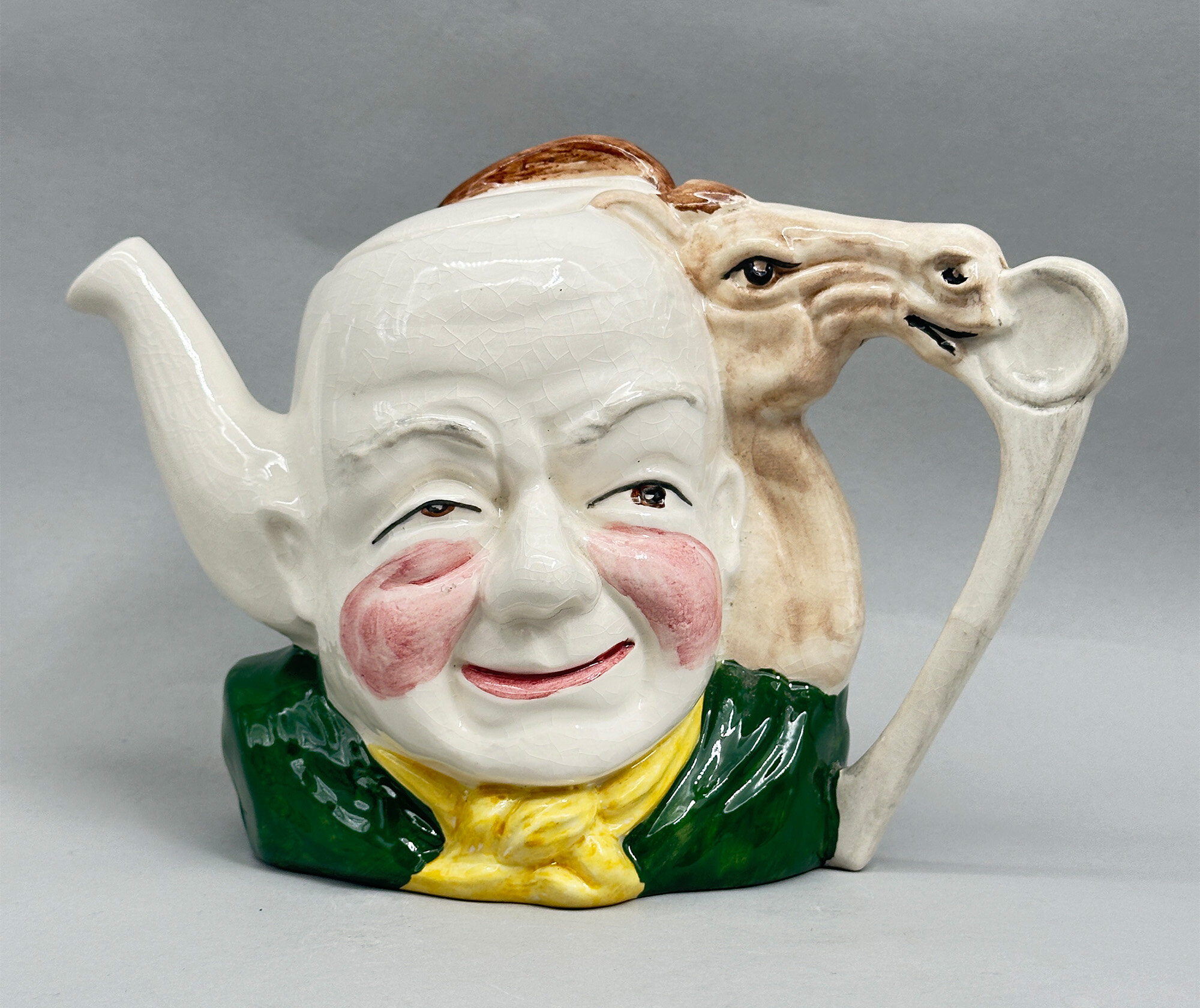
Crown Winsor Jockey Teapot, 1980s
Price: £35Crown Winsor was a short lived earthenware manufacturer at the Sylvan Works, Longton, Stoke-on-Trent, England, previously the premises of the firm Shaw and Copestake, who traded under the well known name ‘SylvaC’ and went into voluntary liquidation in 1982. A workers co-operative trading under the name of Longton Ceramics attempted to take the business over but with little success and eighteen months later the enterprise was fully taken over by United Co-operative Society and run under the name of Crown Winsor. The Co-operative society already owned the Windsor Pottery works and the Crown Clarence Pottery works which was the source of the ‘Crown Winsor’ name. Production centred on whimsical and novelty items, sometimes made from the old SylvaC moulds but demand proved weak and the business ceased trading in 1989. This teapot is typical of their range and the elaborate cipher underneath seems to read ‘CW’ grandly announcing a trade name which unfortunately had a very short life

Wedgwood Calendar Plate, 80th Birthday of Queen Elizabeth II, 2006
Price: £10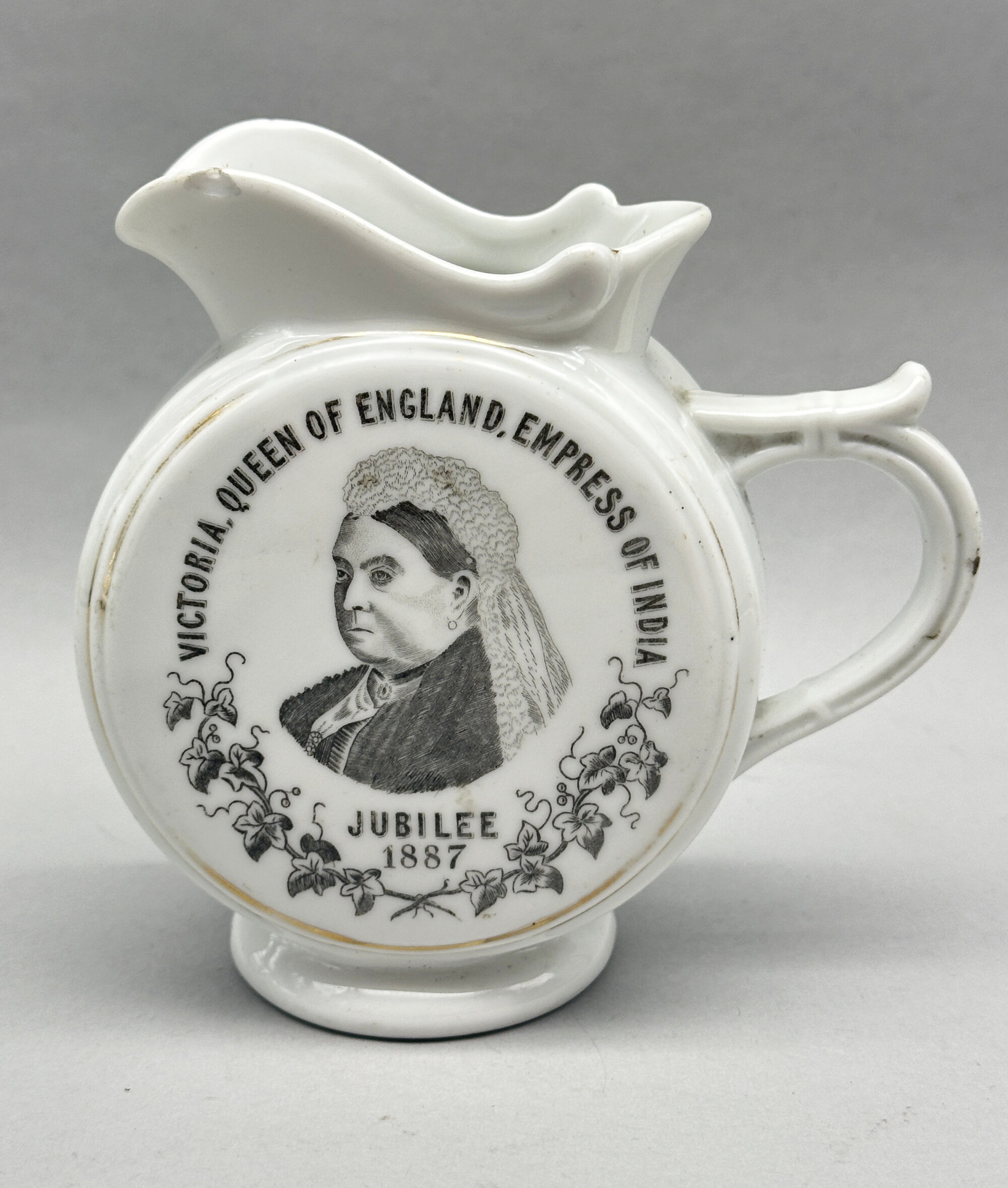
Queen Victoria Golden Jubilee Jug, 1887
Price: £10
VE Day, 50th Anniversary Commemorative Mug, 1995
Price: £10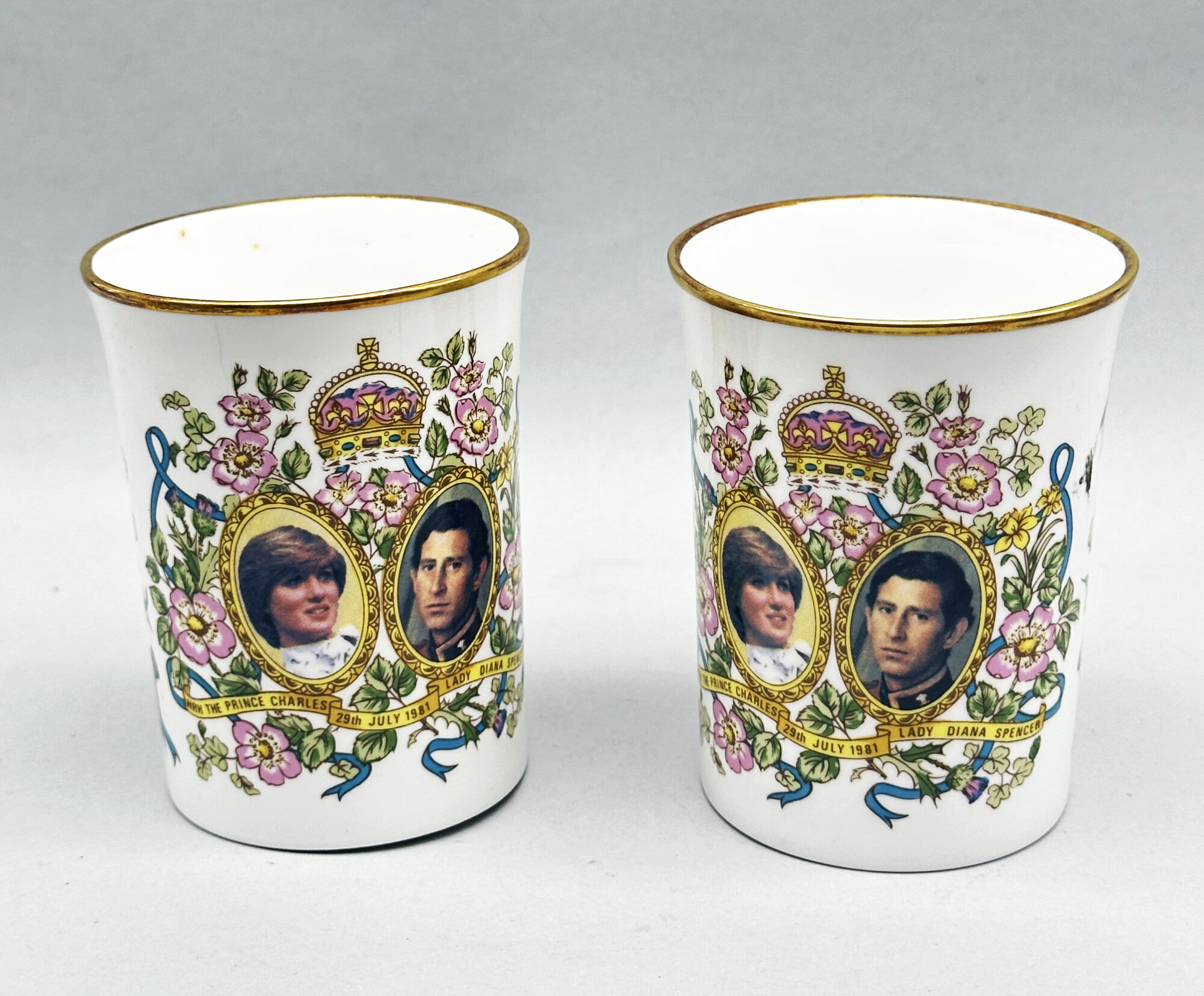
Two Beakers : Wedding of the Prince Charles and Lady Diana Spencer, 1981
Price: £15
Two Wood Boxes : Marriage of Charles and Diana, Birth of Prince William, late C20th
Price: £15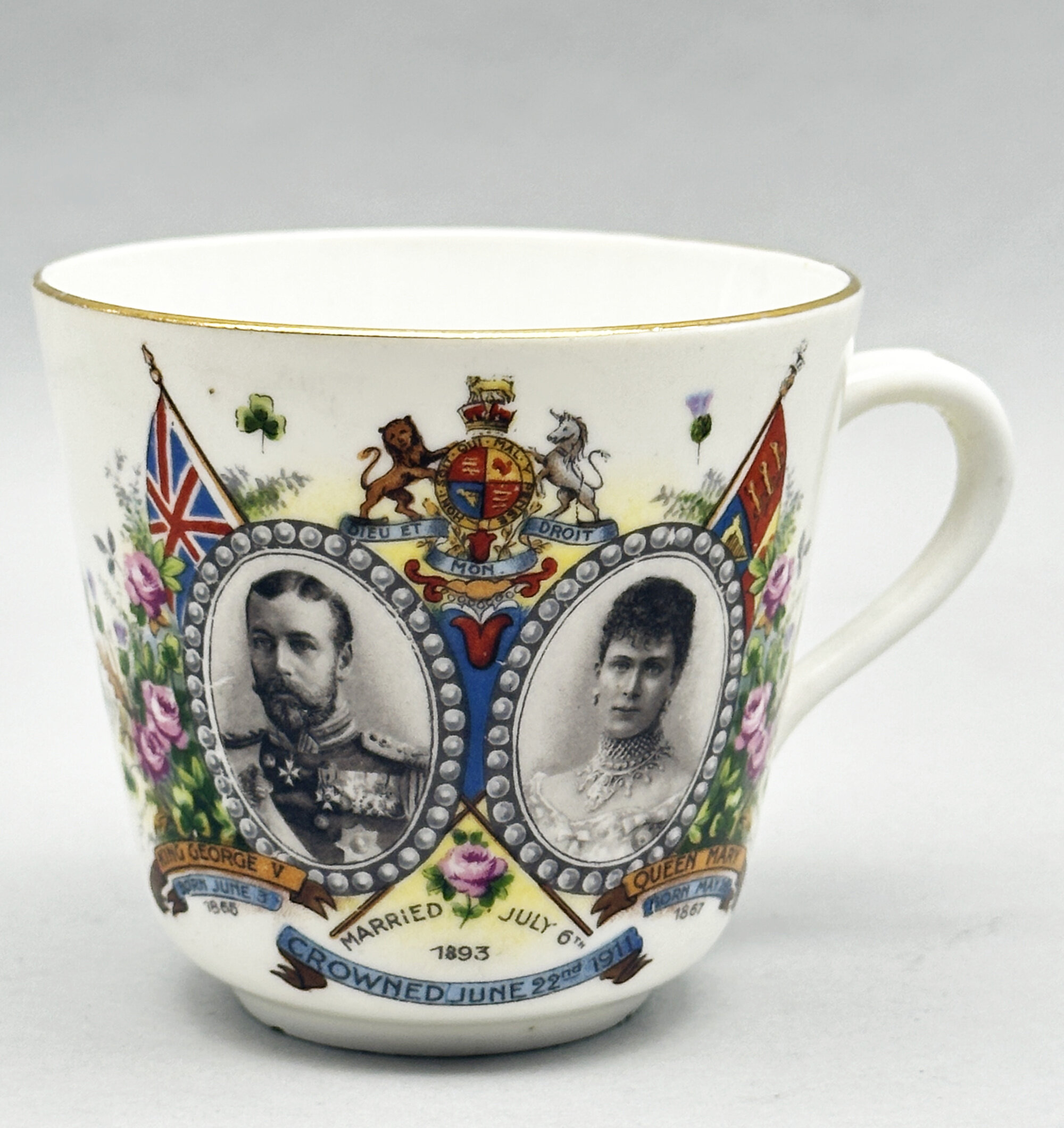
Cup : Marriage and Coronation of King George V and Queen Mary, 1911
Price: £10Production of this piece was presumably contemporary with the coronation in 1911 and many similar pieces were made by other factories at the time, more often in a straight sided mug shape. The form here suggests that there might have been an original saucer but none seem to have survived.

Porcelain Mug : Buckingham Palace 1997
Price: £10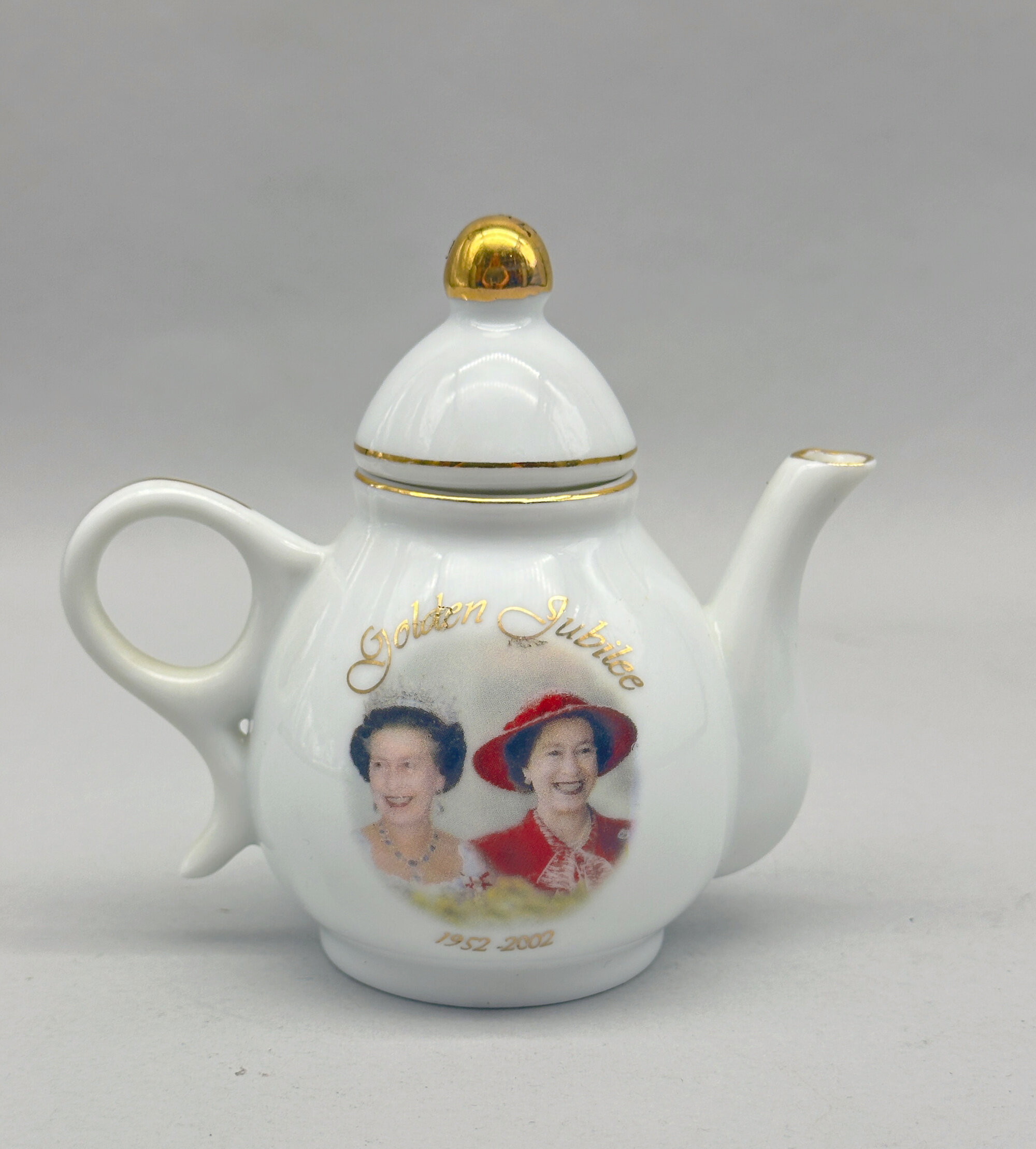
Teapot and Cover : Golden Jubilee Queen Elizabeth II, 2002
Price: £10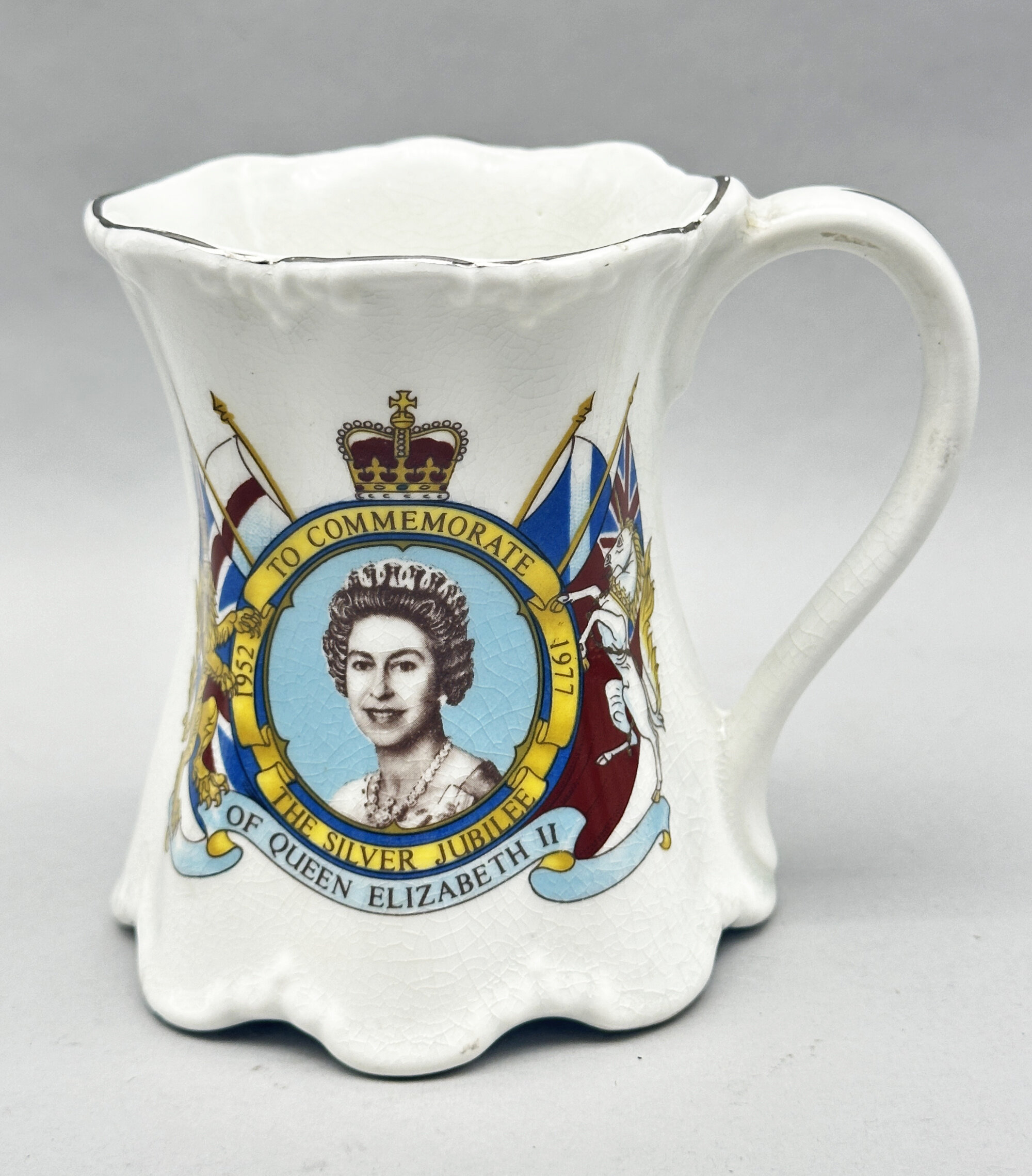
Queen Elizabeth II Silver Jubilee China Mug, 1977
Price: £10
Cup : the Silver Wedding Anniversary of Queen Elizabeth II and Prince Philip in 1972
Price: £25The Paragon China Company, formerly the Star China Company (see Lot XX), produced high quality gift items from 1920 to 1971, at first independently and then in alliance with other companies, finally being absorbed by Royal Doulton in 1972 who kept the ‘Paragon’ name until 1991. Commemorative wares were a speciality and this cup is a fine and typical example.
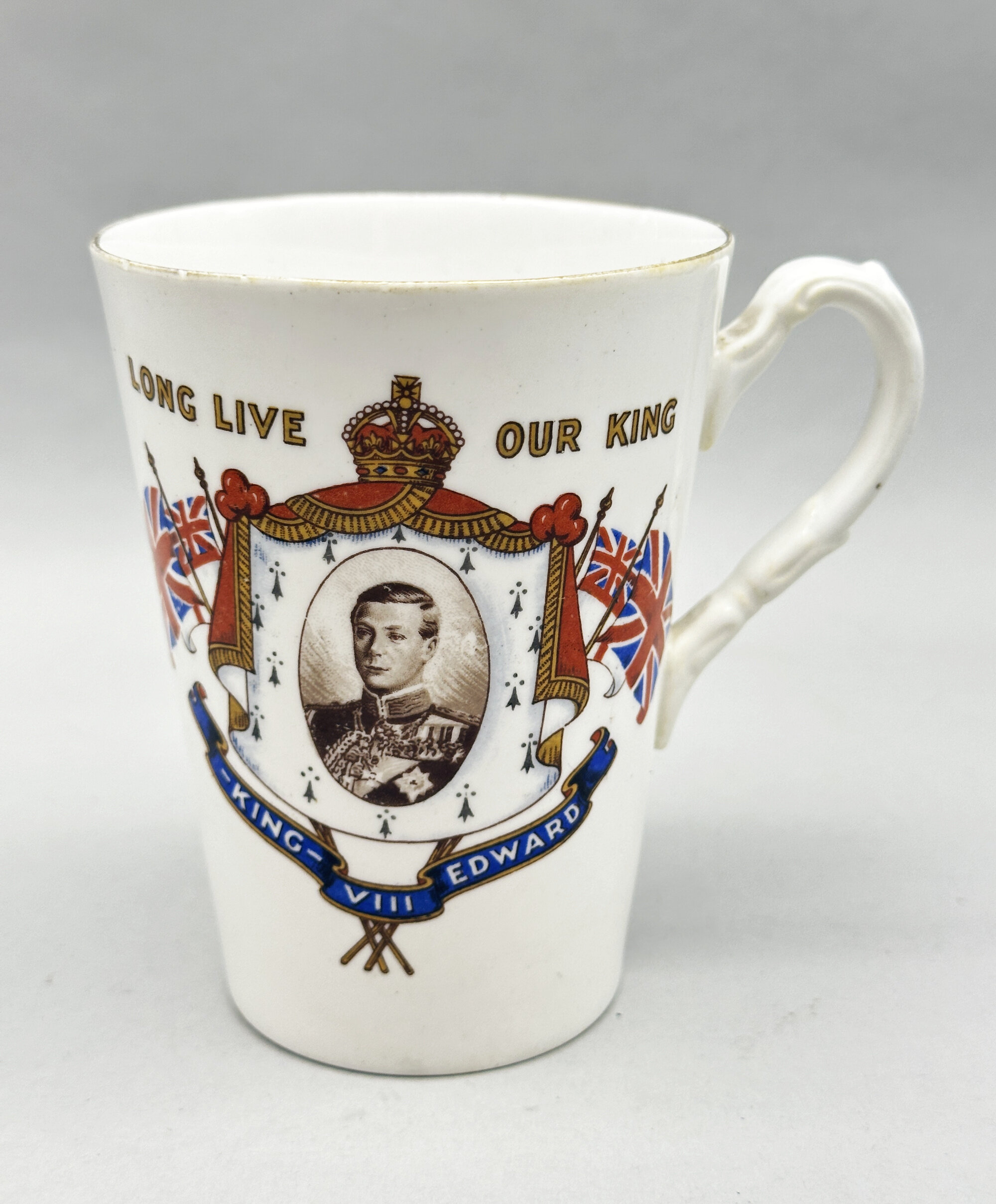
Mug Commemorating the Coronation of Edward VIII in 1937
Price: £25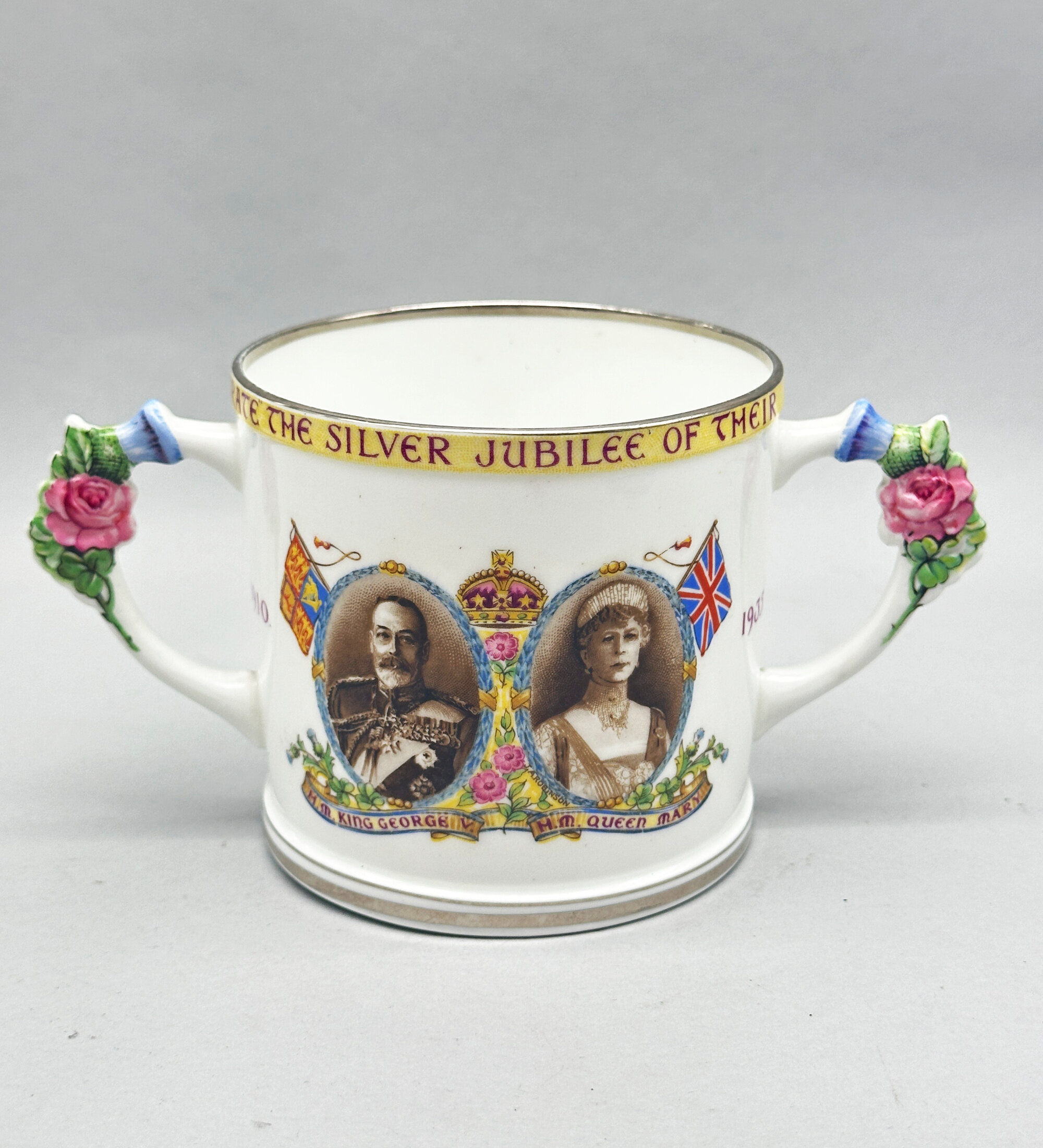
Cup Commemorating the Silver Jubilee of King George V and Queen Mary in 1935
Price: £55The Paragon China Company, formerly the Star China Company (see Lot XX), produced high quality gift items from 1920 to 1971, at first independently and then in alliance with other companies, finally being absorbed by Royal Doulton in 1972 who kept the ‘Paragon’ name until 1991. Commemorative wares were a speciality and this cup is a fine example.
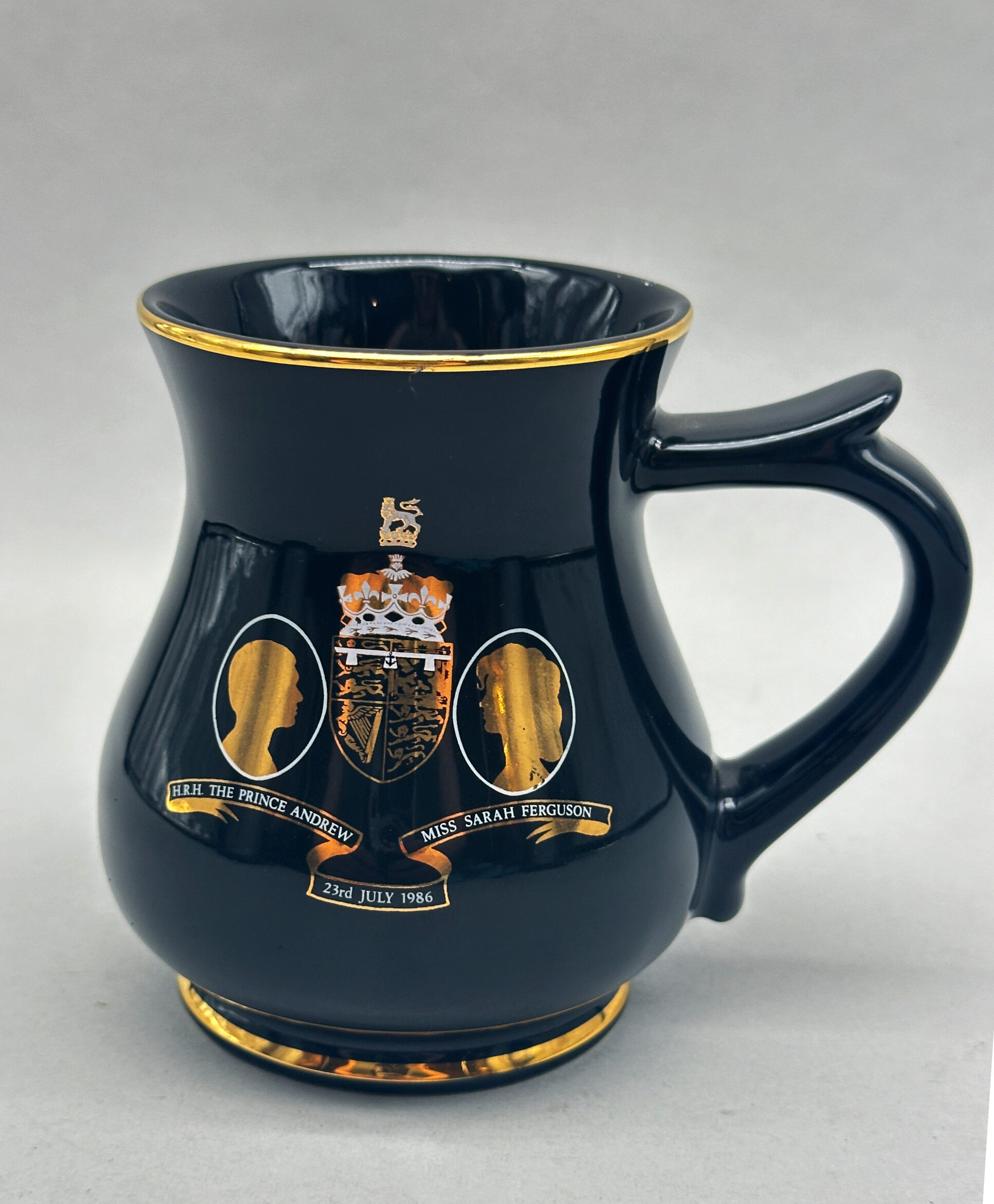
Ceramic Tankard celebrating the Marriage of Prince Andrew and Sarah Ferguson in 1986
Price: £10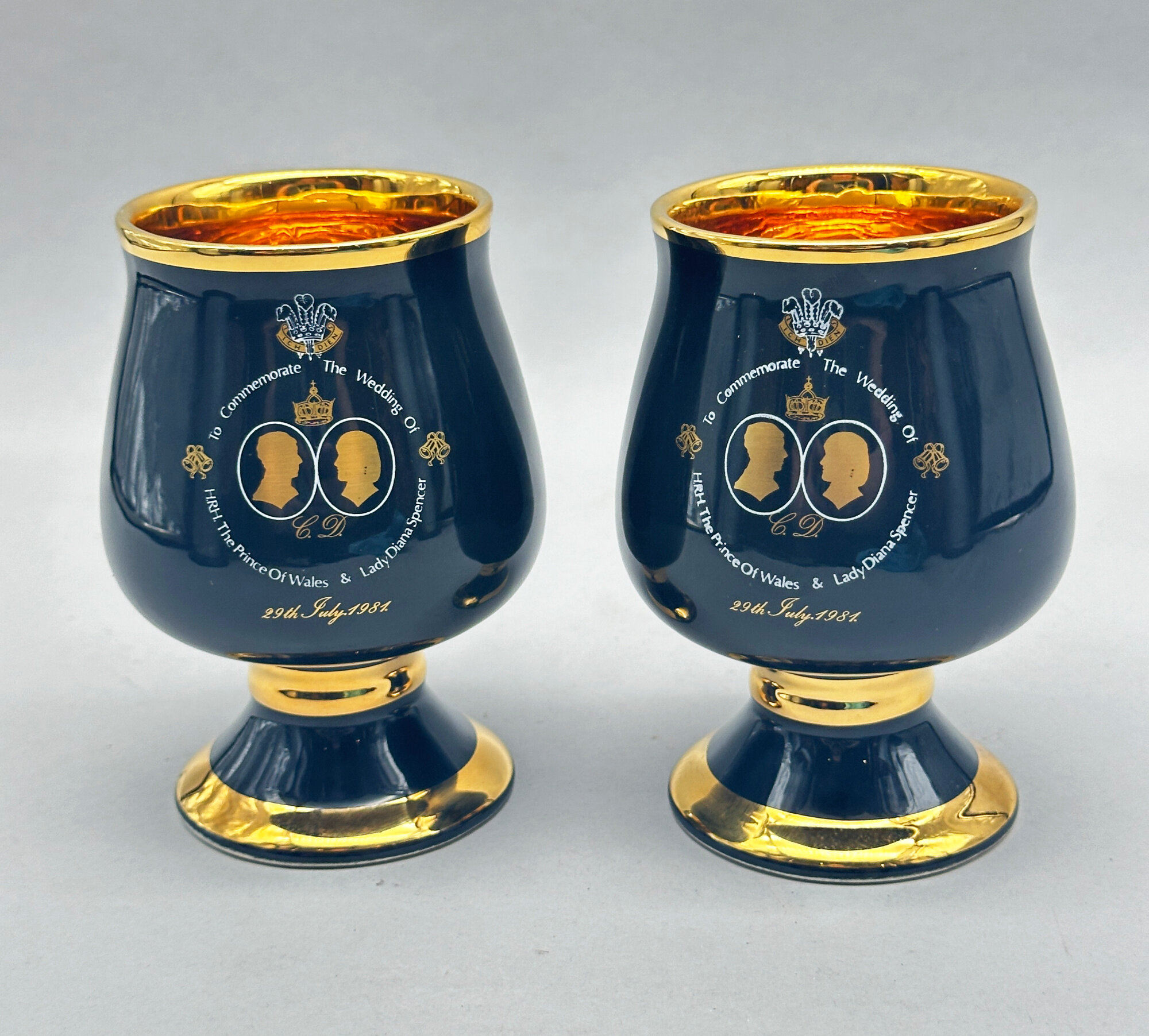
Pair of Ceramic Goblets : the Wedding of Prince Charles and Lady Diana Spencer in 1981
Price: £20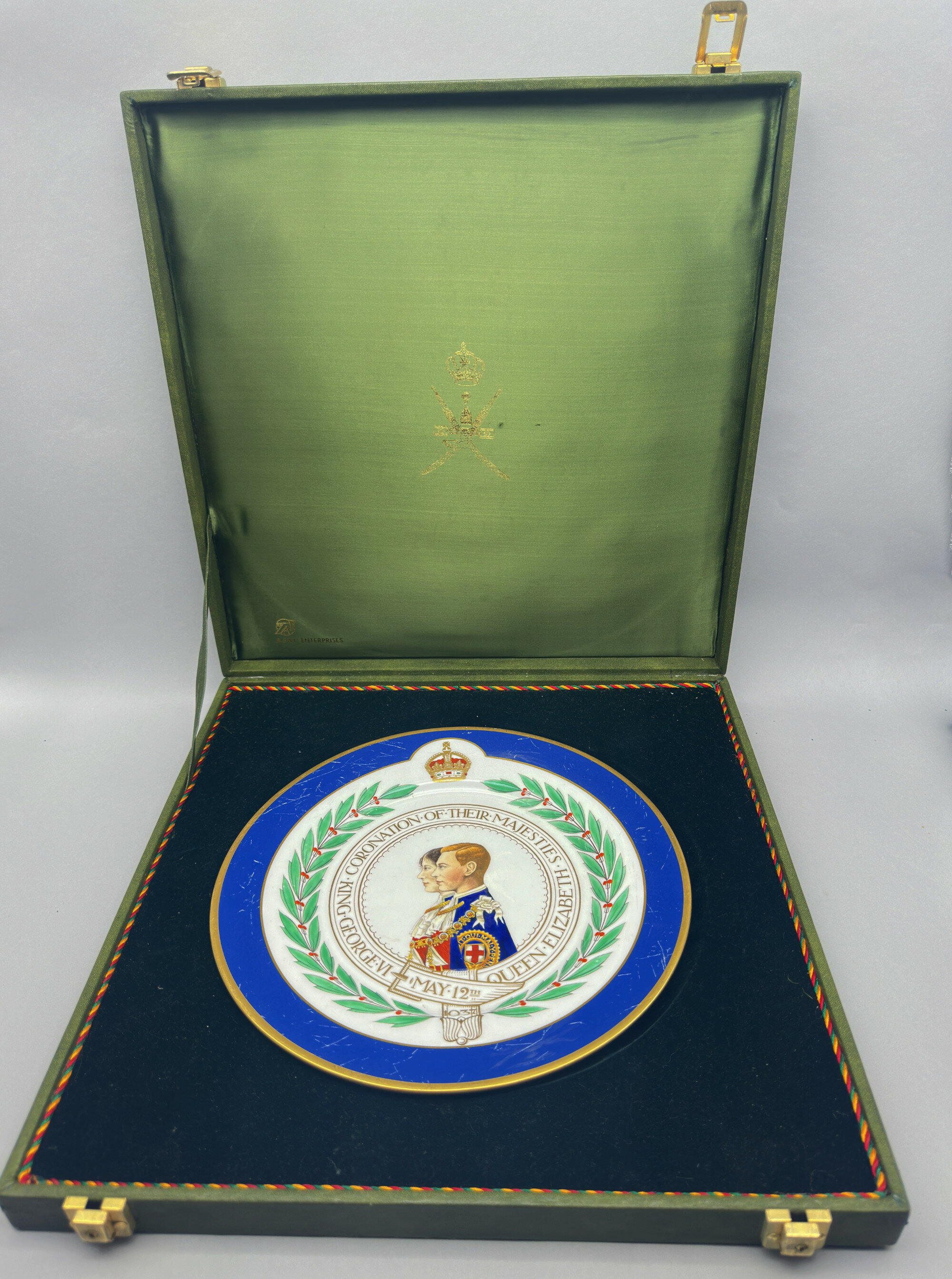
Mintons Coronation Plate, King George VI and Queen Elizabeth 1937, boxed
Price: £25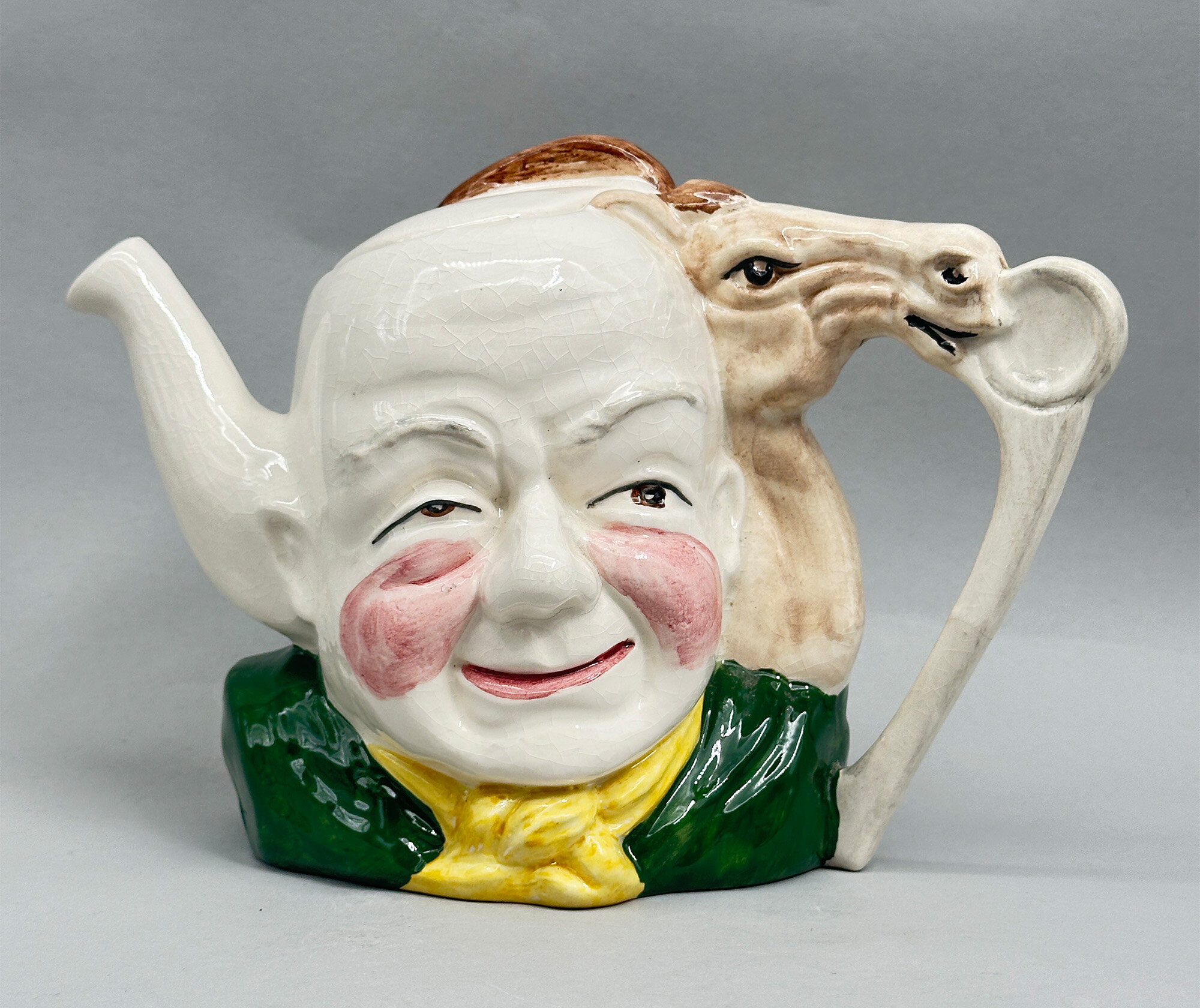
Crown Winsor Jockey Teapot, 1980s
Price: £35Crown Winsor was a short lived earthenware manufacturer at the Sylvan Works, Longton, Stoke-on-Trent, England, previously the premises of the firm Shaw and Copestake, who traded under the well known name ‘SylvaC’ and went into voluntary liquidation in 1982. A workers co-operative trading under the name of Longton Ceramics attempted to take the business over but with little success and eighteen months later the enterprise was fully taken over by United Co-operative Society and run under the name of Crown Winsor. The Co-operative society already owned the Windsor Pottery works and the Crown Clarence Pottery works which was the source of the ‘Crown Winsor’ name. Production centred on whimsical and novelty items, sometimes made from the old SylvaC moulds but demand proved weak and the business ceased trading in 1989. This teapot is typical of their range and the elaborate cipher underneath seems to read ‘CW’ grandly announcing a trade name which unfortunately had a very short life
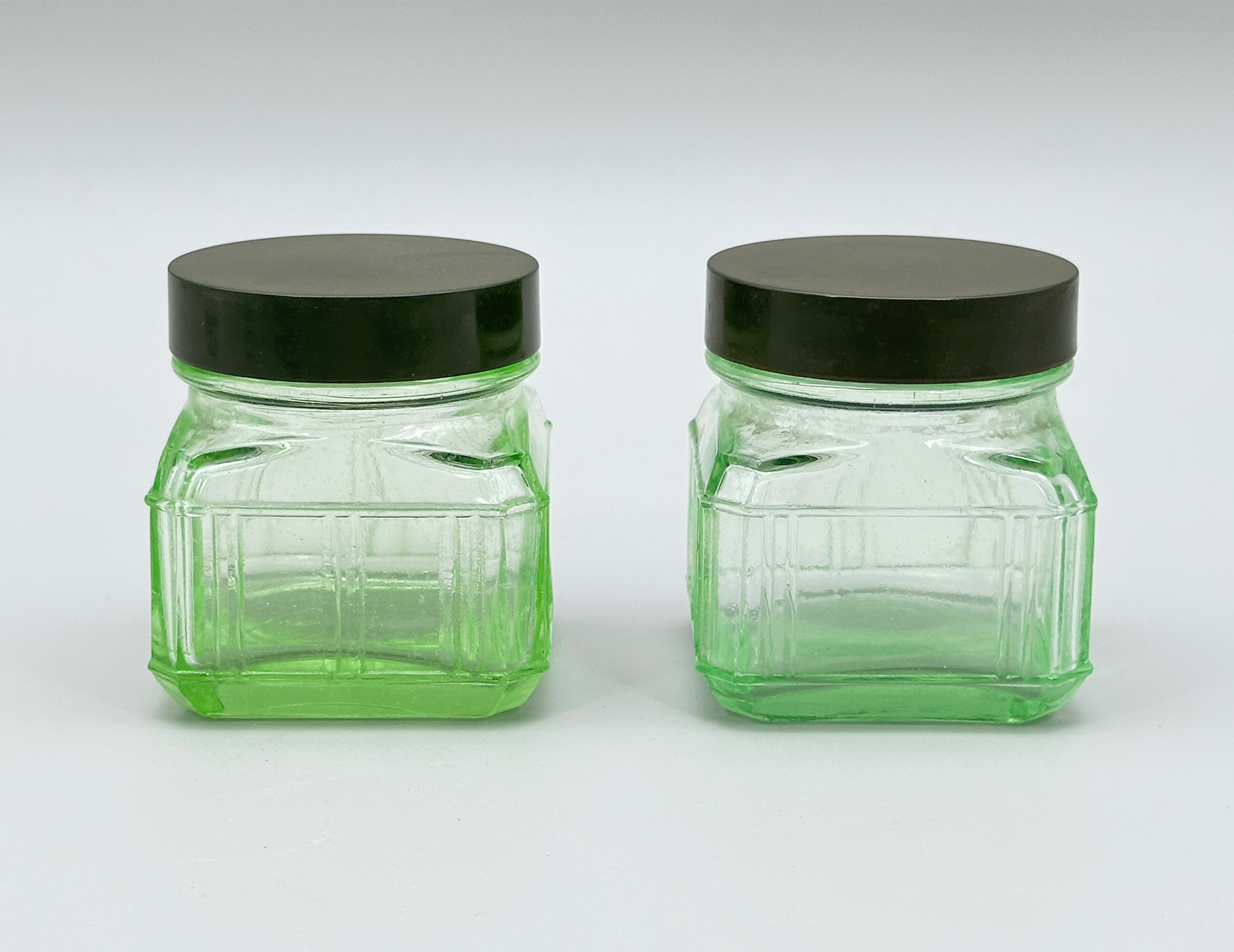
Pair of small green depression glass Jars with bakelite Covers, 1930s
Price: £45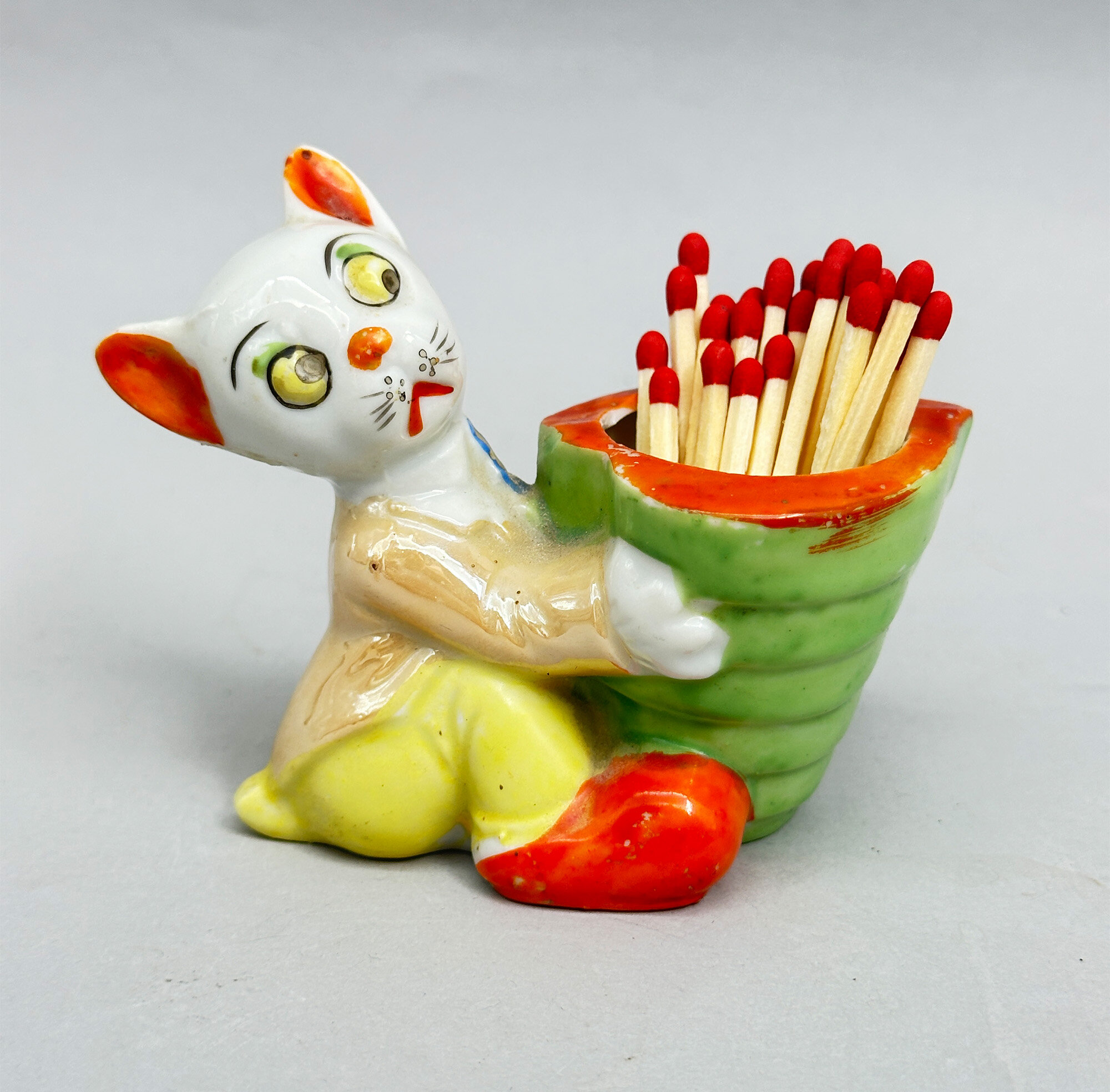
Novelty match holder with cat, Klimax Japan, mid C20th
Price: £20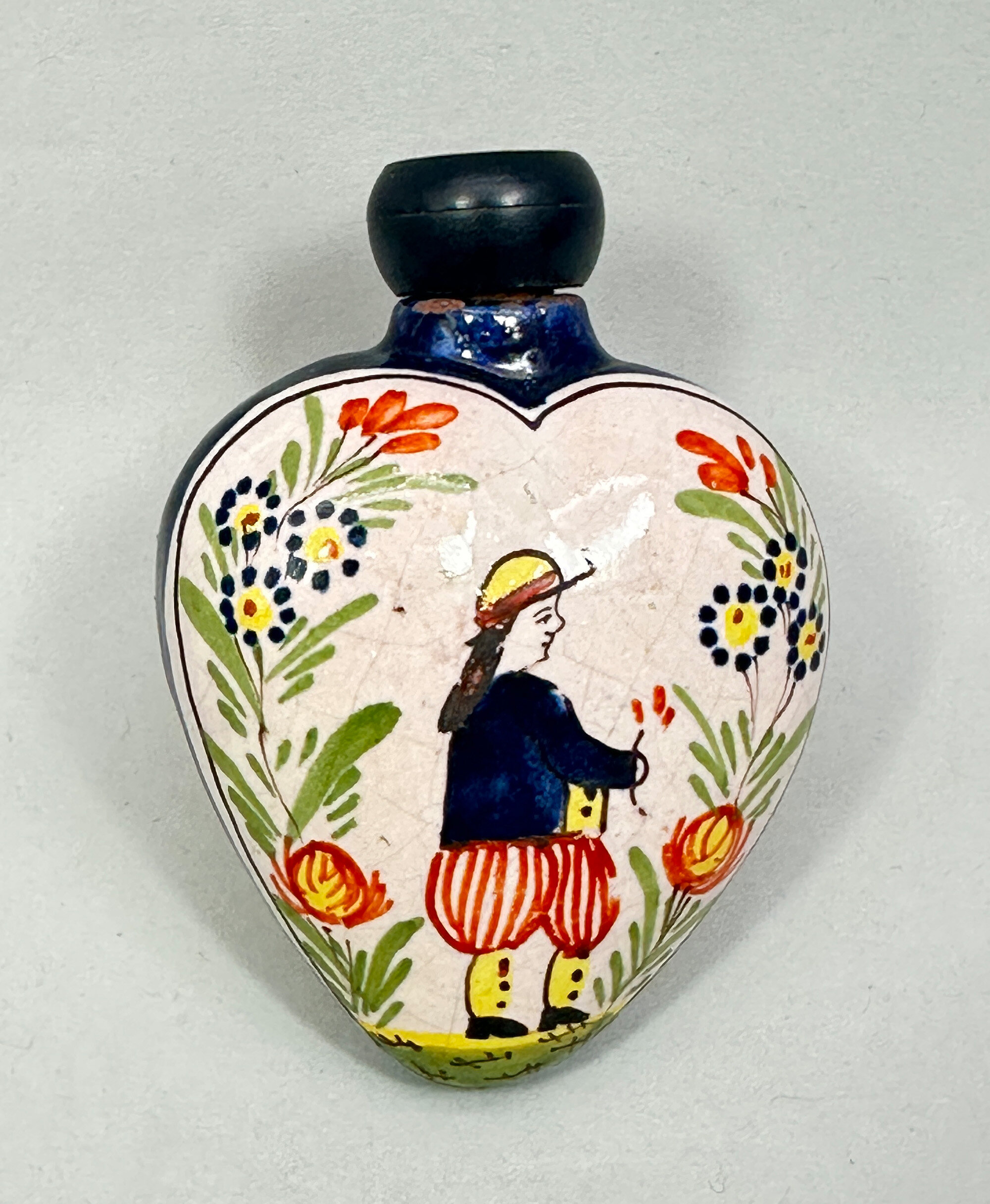
Faience Perfume Bottle and Stopper, Quimper France, C20th
Price: £75This bottle has the Breton gentleman on its front face and a fleur de lis to the reverse. The stylised lily, known as fleur de lis, became a symbol of the French royal family and France in general. It occurs, for example, on the Canadian flag but was also regularly used as a decorative motif by the Quimper potteries. These bottles can date to as early as the beginning of the twentieth century but a later time of production is probably a safer assumption here, perhaps to the 1950s. Few of these bottles survive with their fitted stoppers and the traces of cork to the top interior suggest that this stopper has been in place for some time and probably since the date of manufacture.
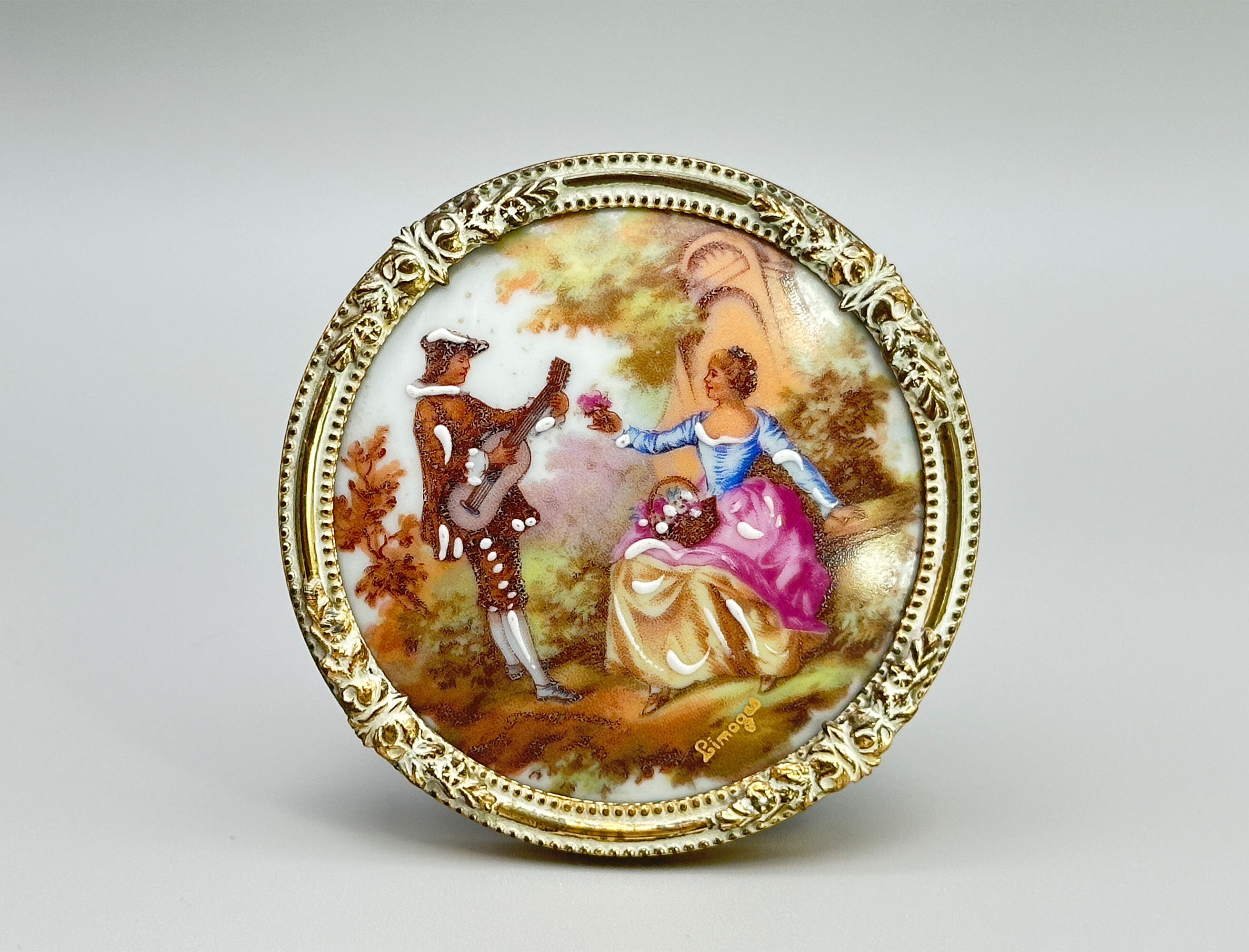
Small circular ceramic plaque after Fragonard marked Limoges, framed, late C20th
Price: £25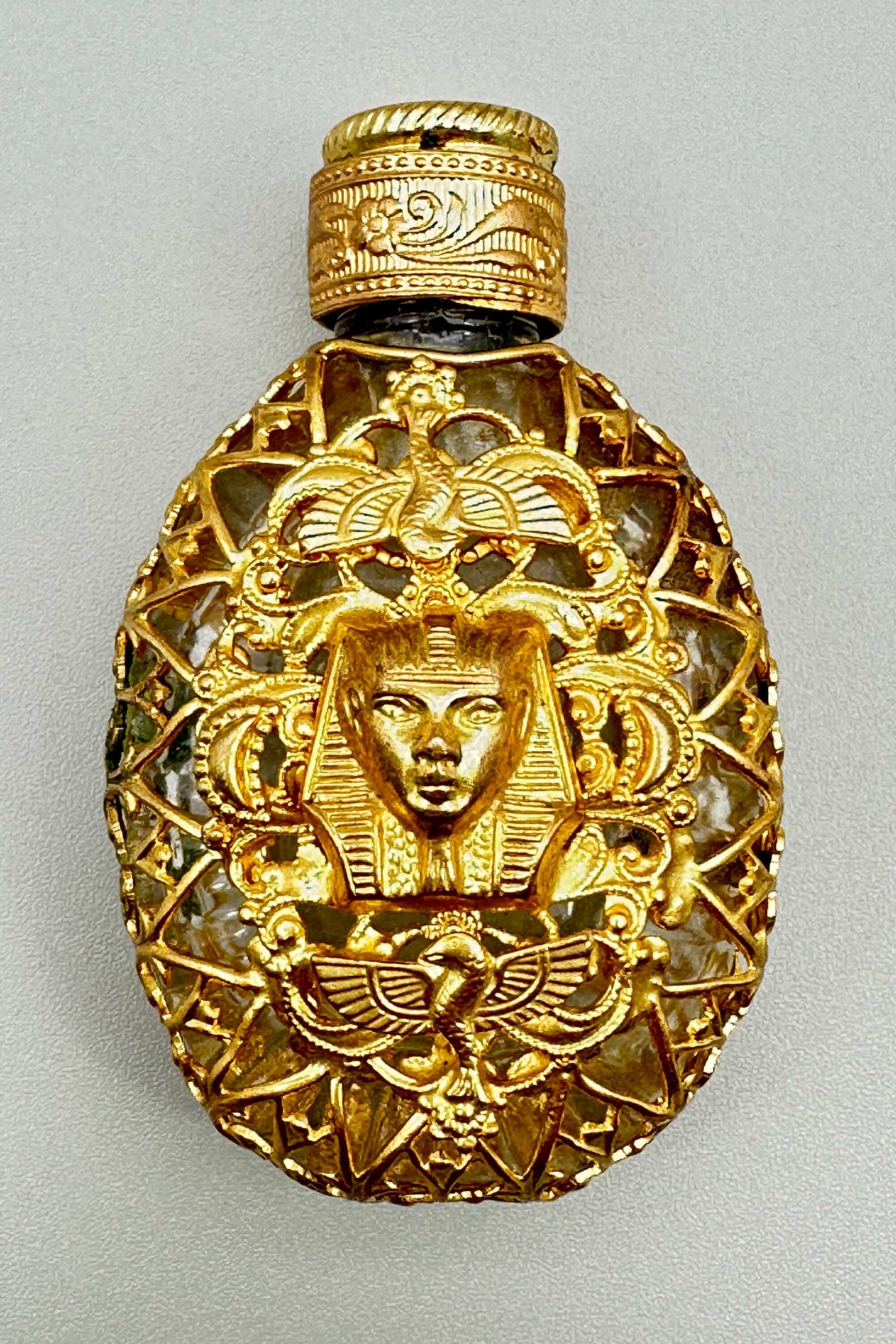
Egyptian Revival Perfume Bottle and Cover, probably Czech second half C20th
Price: £55
Perfume Bottle Brooch, probably French mid C20th
Price: £55
Pair of petit point Tapestry Pictures, The Needlewoman Shop London, mid C20th
Price: £55The fine stitching used here is a version of needlepoint termed ‘petit point’ because of the small size of stitches used. In general needlepoint, designs are stitched onto fine canvas using a simple tent stitch, a small, diagonal stitch that crosses over the intersection of one horizontal and one vertical thread of the canvas forming a slanted stitch at a 45-degree angle. Petit point uses the same technique but with much finer stitching and thread on a much finer canvas often requiring magnification for the work to be carried out. It allows more intricate designs and shading effects as can be clearly seen here. The technique was particularly popular in France amongst the aristocracy in the early eighteenth century which perhaps determines the choice of subject here but with their intricate stitching and complementary frames, this pair of tapestries would definitely be a candidate for boudoir accessories in the present day.
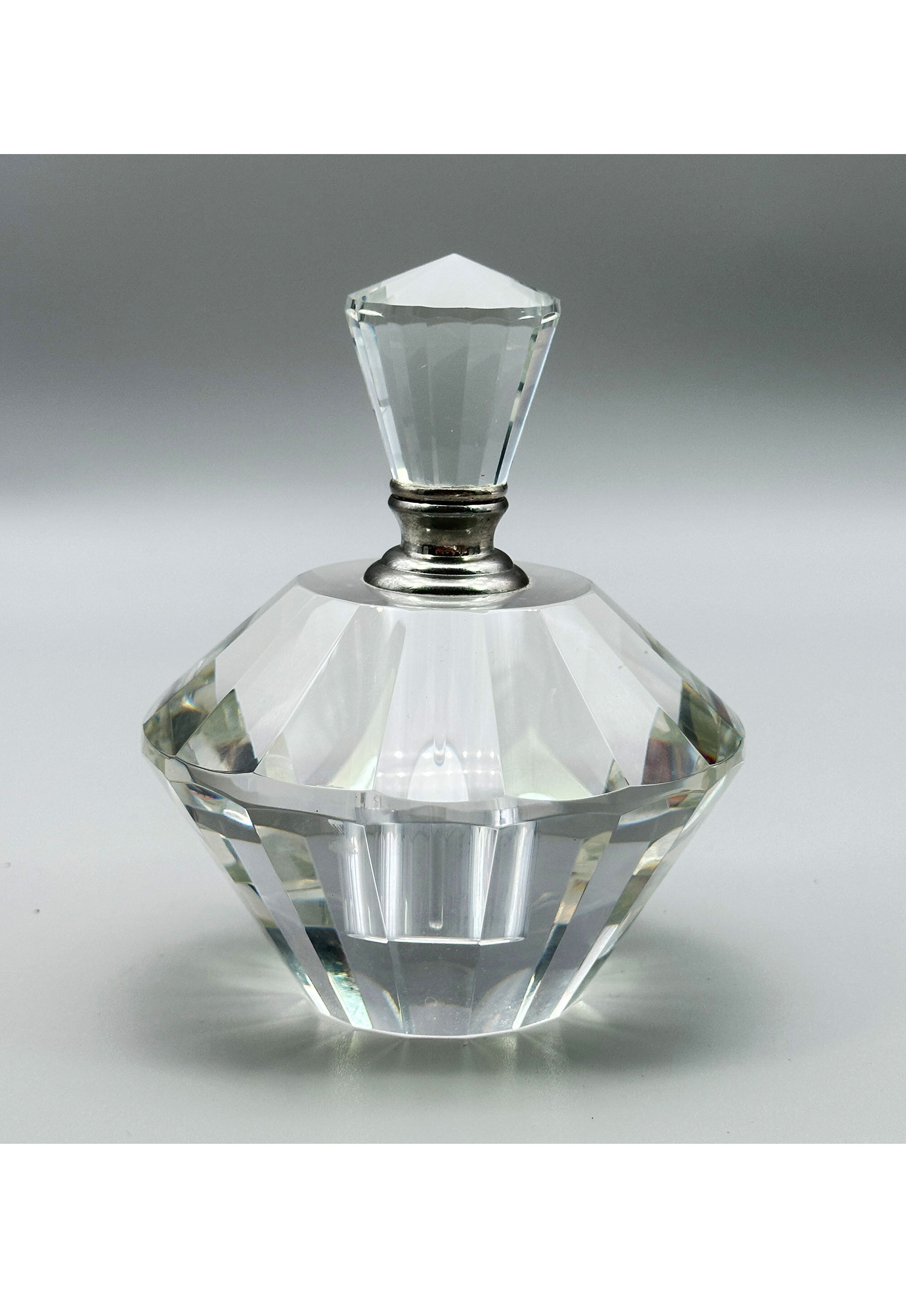
Art Deco style crystal glass Perfume Bottle and Stopper, late C20th
Price: £35
Perfume Bottle and Stopper, Stuart Akroyd, signed J S A, late C20th
Price: £75The signature here, which occurs on other pieces by the same artist, is for Stuart Akroyd, a celebrated English glassmaker who worked from studios in Sunderland then Sheffield from 1991 to 2021(see image 8). Born in 1966, Akroyd studied at Sunderland University, following this with a Post Graduate Diploma at the International Glass Centre, Brierley Hill. After working as the head maker at Lakeland Crystal, Cumbria he went on to establish his own business, Stuart Akroyd Glass Designs, in 1991, renaming it Stuart Akroyd Contemporary Glass when he moved from Sunderland to Sheffield in 2000. Best known for his sculptural pieces which were inspired by the ‘Skylon’ structure, the well known symbol of the 1951 Festival of Britain, Akroyd also worked on a smaller scale and there a number of small bottles by him of which this is an excellent example. The glass effects are skilful and inventive and the flat panel to the body is both decorative and functional, allowing the level of fluid in the bottle to be seen clearly. Many of his sculptural pieces were made in his later Sheffield workshop which, with its greater space, allowed him to employ the techniques necessary to create them, so it is a reasonable guess that this bottle and its companions belong to the first phase of his output.

Novelty Teapot in the form of an apple, probably English, late C20th, early C21st
Price: £35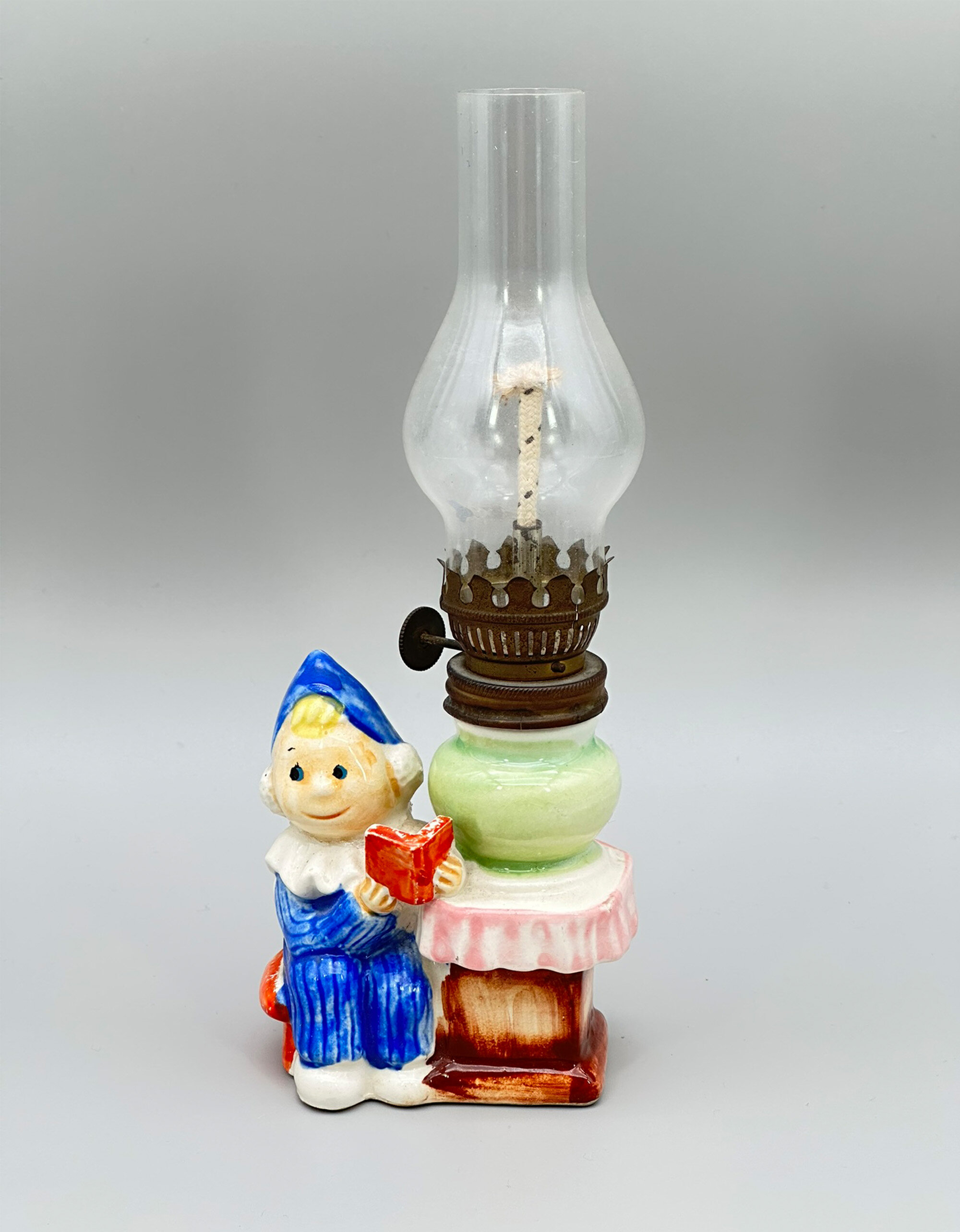
Andy Pandy Oil Lamp, German, Karl Meyer, 1950s
Price: £35TV linked merchandise was created even in the earliest days of the medium and this charming small ceramic oil lamp, hardly the safest accessory for the nursery, is an amusing example. Andy sits next to a table with an urn on the top which forms the base of the lamp. Oil or paraffin would have been contained inside and once lit the wick could be adjusted by turning the round flat knob on the side. This has the trademark symbol for the German toy manufacturers Karl Meyer (see image 7). The base is marked ‘FOREIGN’ which was a common requirement for items imported into the UK after the second World War and allowed the makers to conceal their country of origin, which might have been useful to some of them at the time. A true piece of nostagia whether the figure represented is familiar or not.

Trade+Aid Teapot, Van Gogh Café Scene, UK 1990s
Price: £25
Two Corgi Silver Jubilee Toys Boxed, (41) State Landau, (417) London Bus, 1977
Price: £45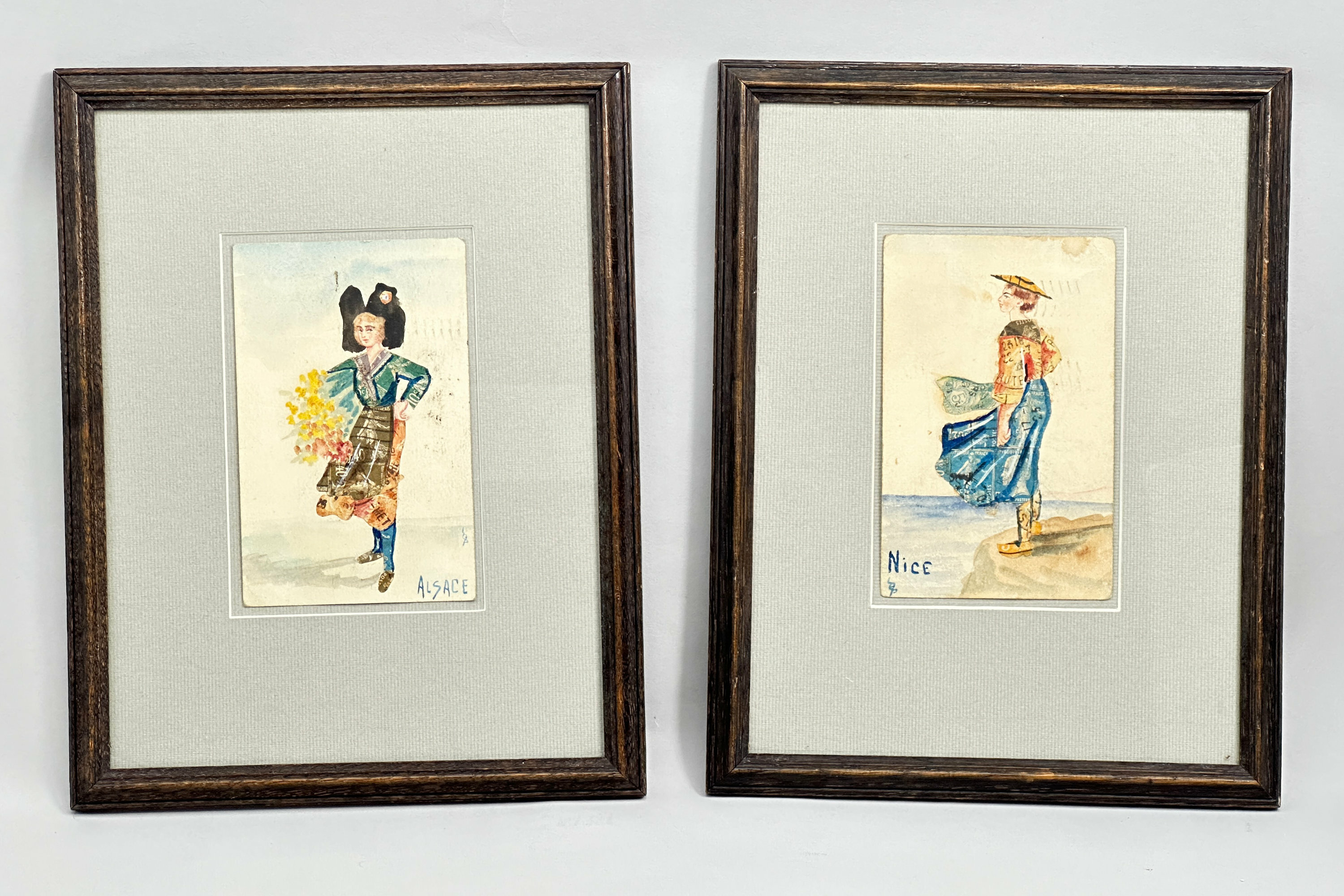
A pair of stamp collage Postcards, Alsace and Nice, framed, early C20th
Price: £45
Kiralpo ware Dressing Table Set, marked, 1930s
Price: £35Kiralpo ware was one of the trade names used by Kirkland and Co, earthenware and ceramic manufacturers based at the Albion Pottery, Etruria, Stoke-on-Trent, England who traded from 1891 to 1938 when the business was bought and renamed by Mr A.E.Gray. The format of the mark gives a dating between 1928 and 1938 with ‘E’ standing for Etruria. Kirkland and Co made various modest but colourful decorative items to furnish the home. In a 1907 guide they are described as ‘general earthenware, fancy goods, and majolica manufacturers’. Their designs were not sophisticated but obviously had a popular appeal and this set with its bold transfer decoration of birds set within a rather vivid pink border is typical of their work.
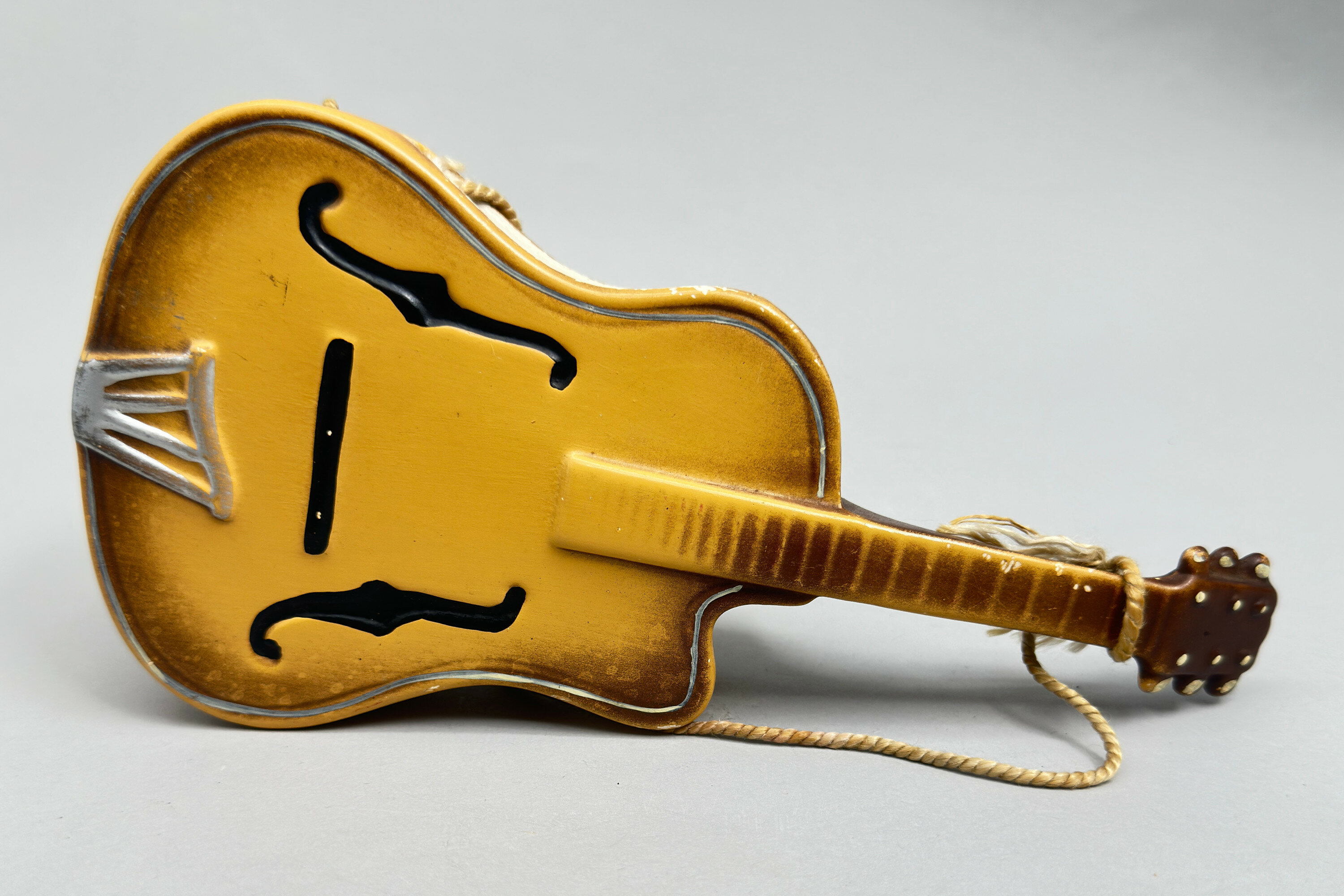
Novelty ceramic Wall Vase in the form of a Gretsch Guitar, English, 1950s
Price: £25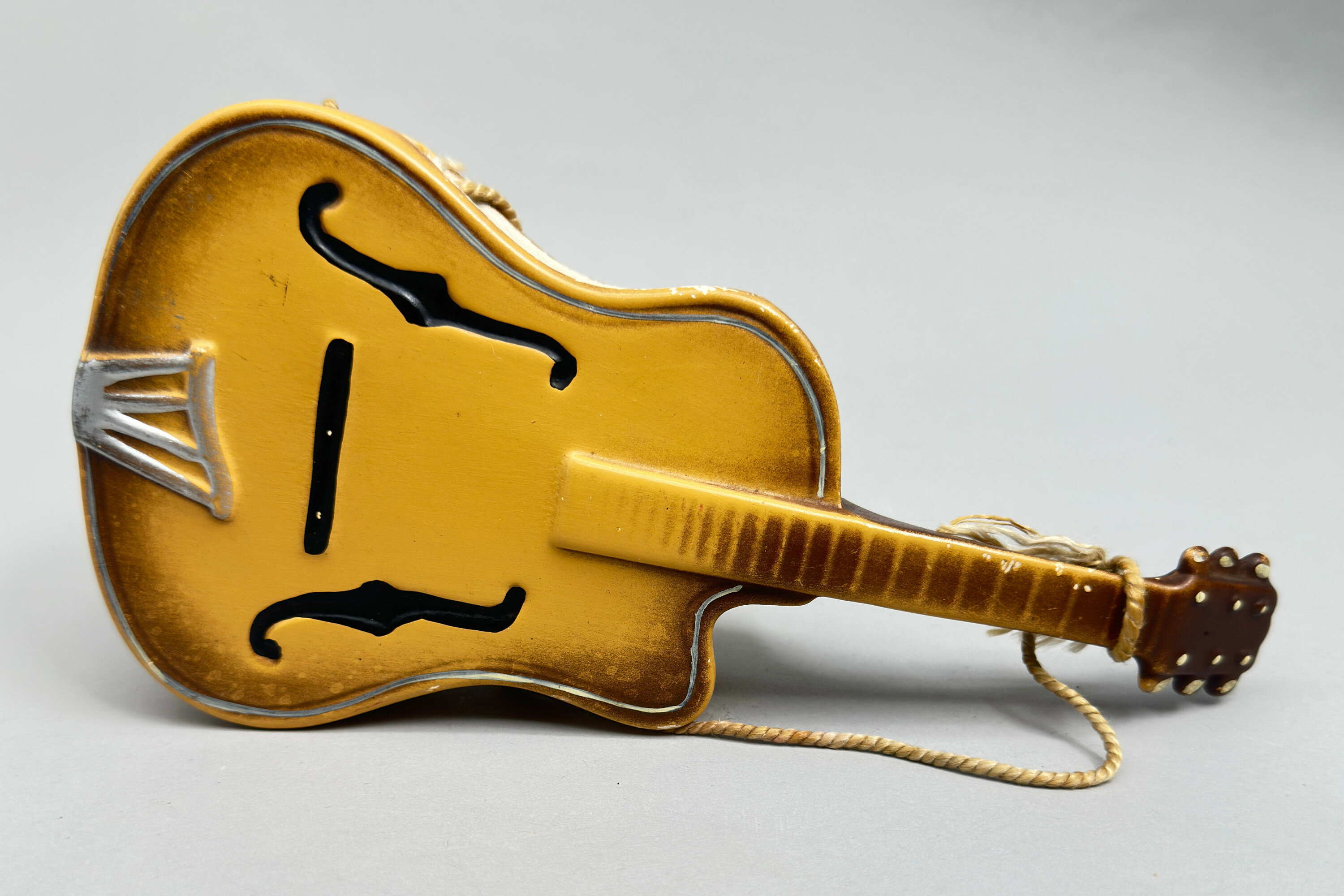
Novelty ceramic Wall Vase in the form of a Gretsch Guitar, English, 1950s
Price: £25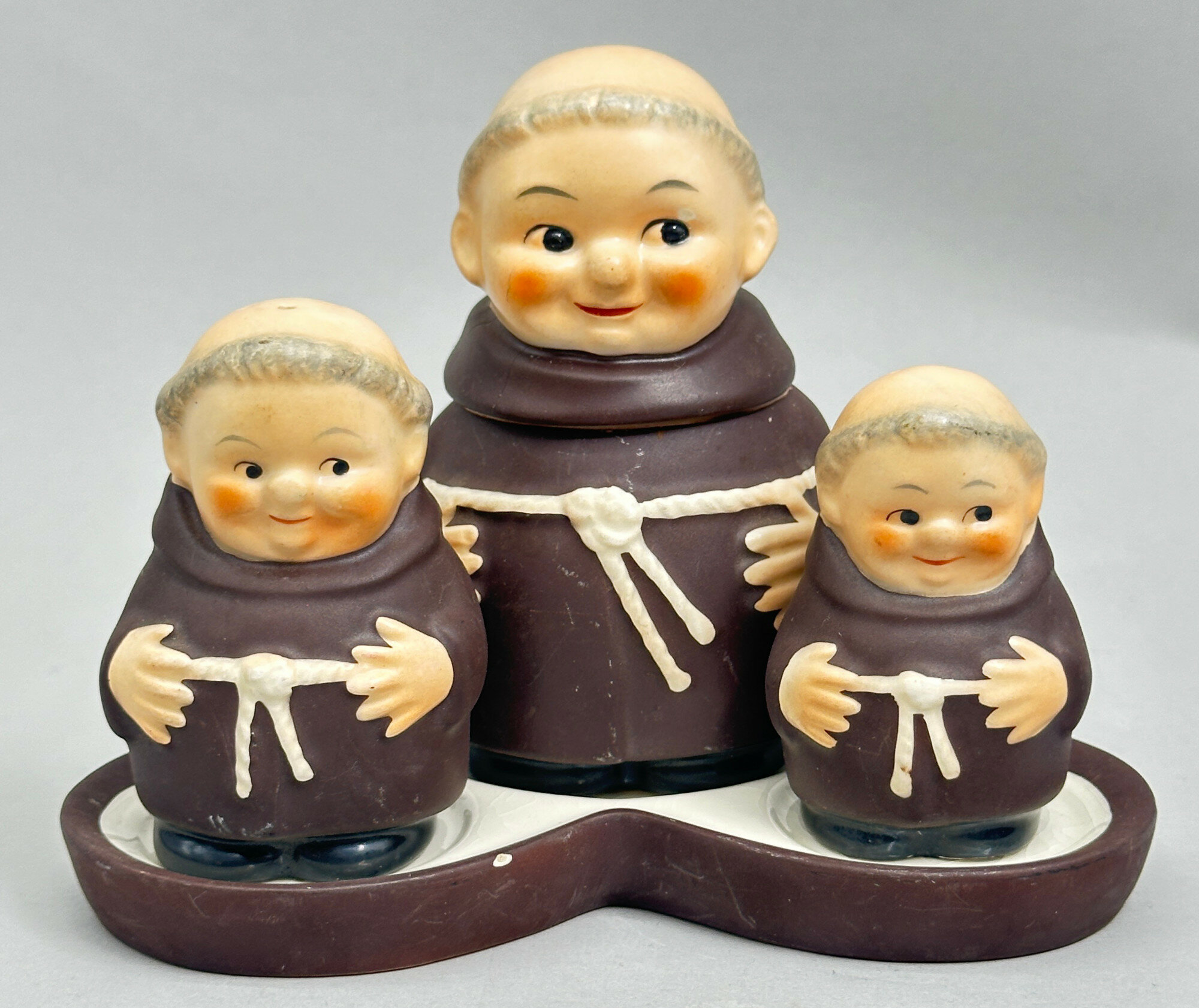
Cruet set in the form of three Friar Tuck Monks on a Tray, Hummel, West Germany, 1960s
Price: £55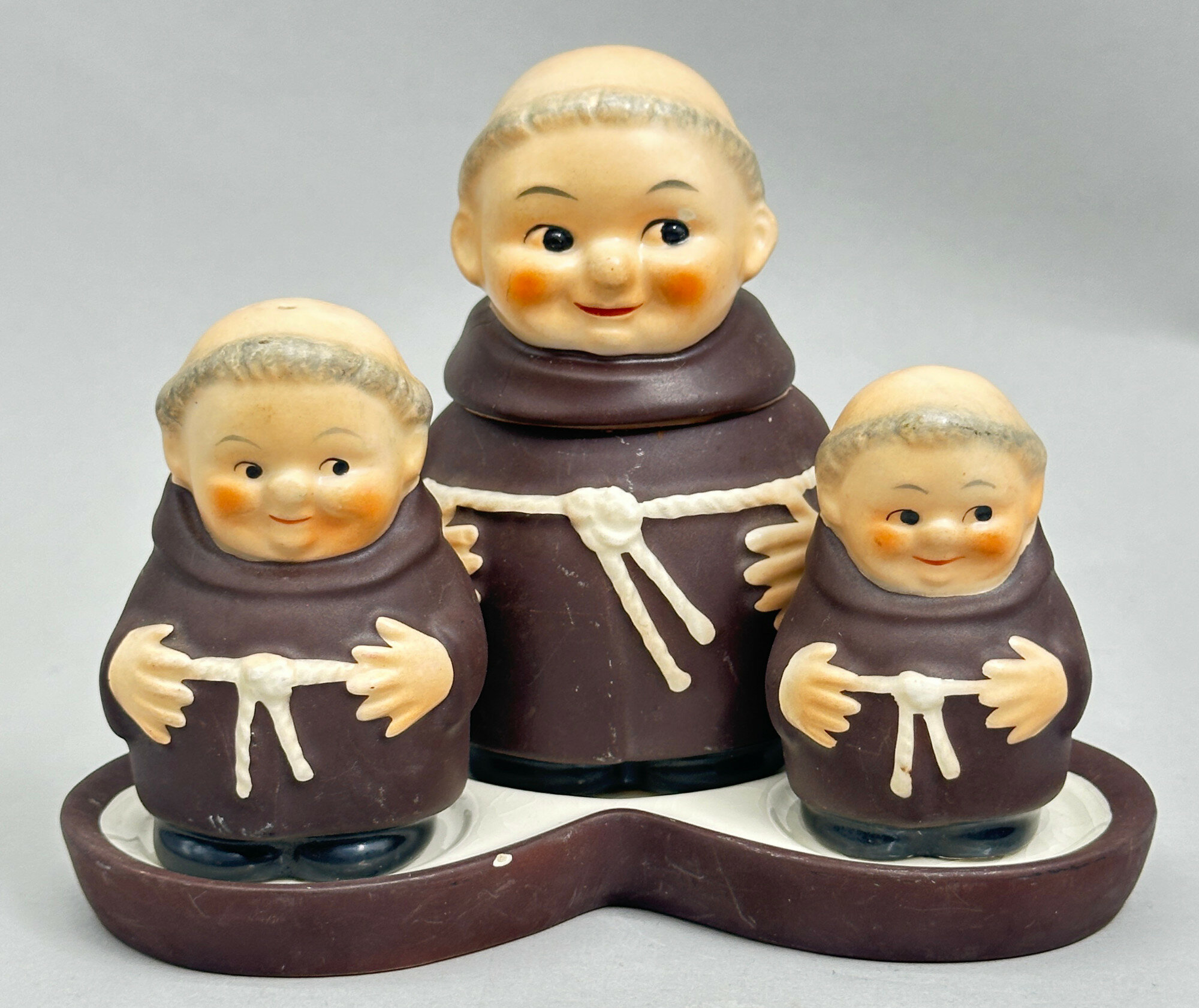
Cruet set in the form of three Friar Tuck Monks on a Tray, Hummel, West Germany, 1960s
Price: £55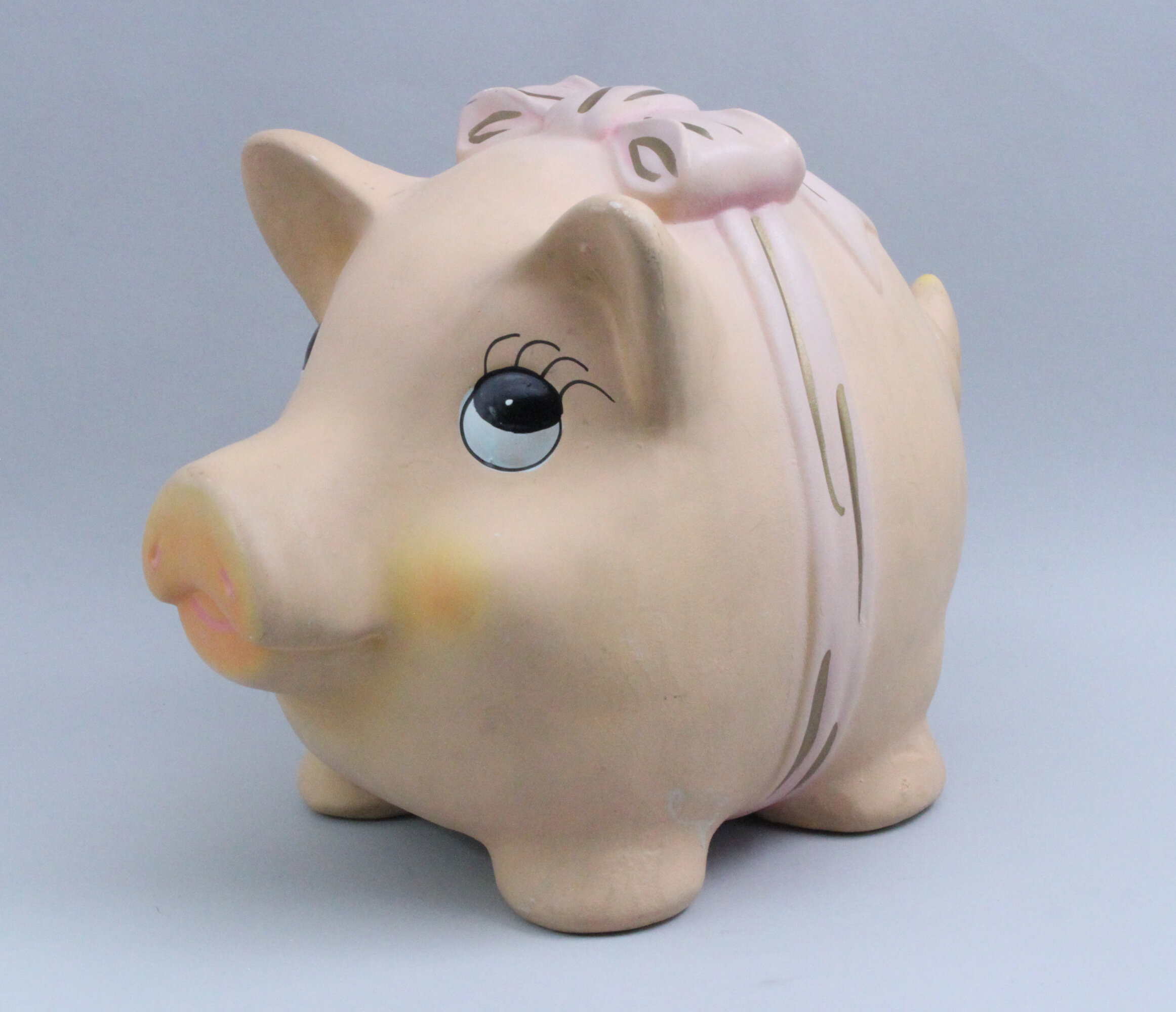
A Ceramic Moneybox in the form of a Pig, Helensgate Ceramics, mid twentieth century
Price: £25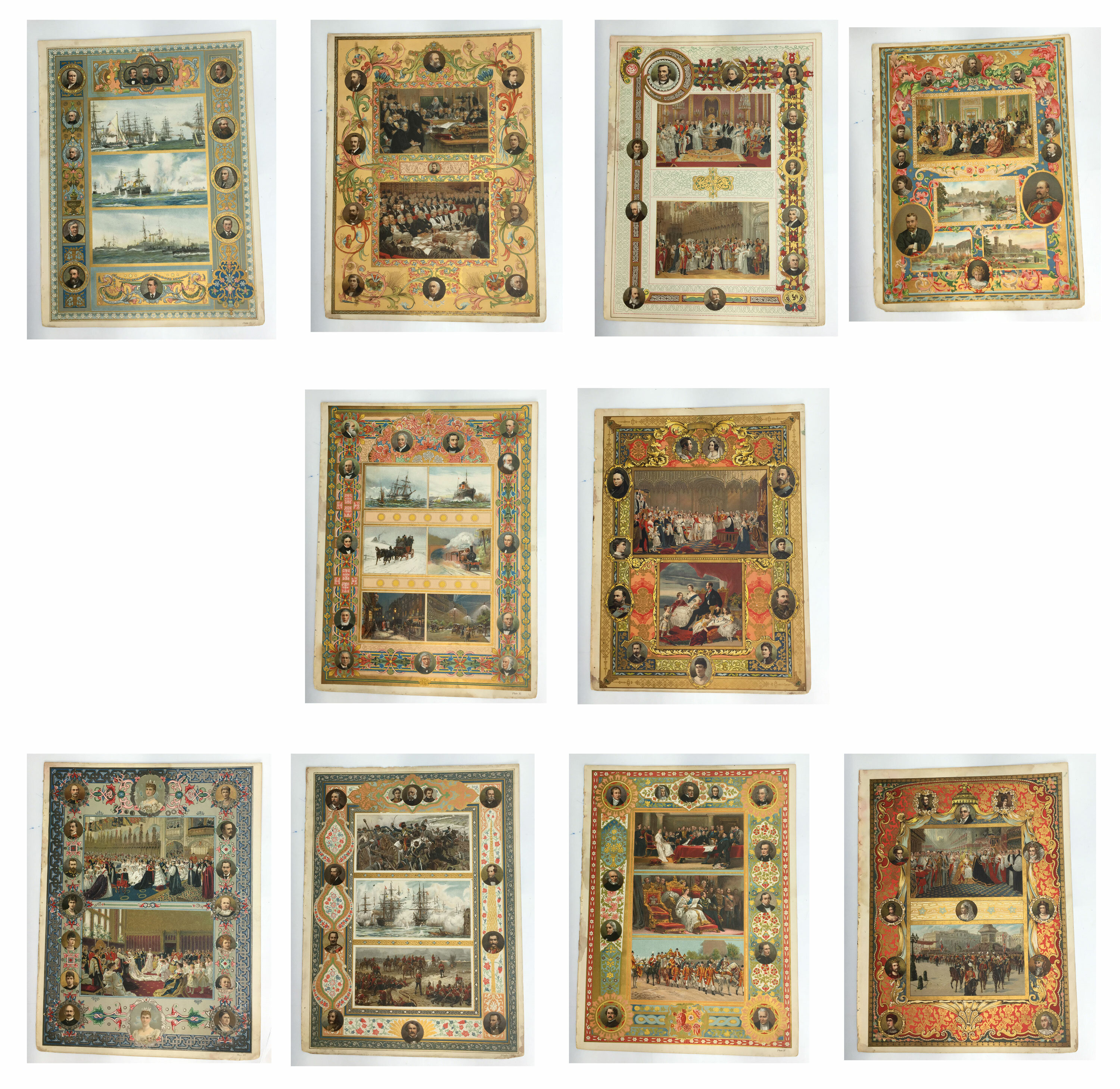
10 Chromolithographs from Illustrated London News publication celebrating Queen Victoria’s Diamond Jubilee 1897
Price: £85Print 1: This print depicts the weddings of Queen Victoria and Prince Albert and on the bottom depicts the marriage of Mary of Teck to the then Duke of York. The portraits surrounding these images are of the two brides and other royal family members. (numbered Plate 17)
Print 2: This print depicts the development in the modes of transportation during her reign. Clipper ship to steamer, carriage to train, walking and carriages to bicycles and automobiles. The portraits will be the inventors and visionaries of these developments. (numbered Plate XI)
Print 3: This print depicts the House of Commons with Prime Minister Salisbury and the House of Lords. The surrounding portraits are politicians of the day. The bottom centre is of Gladstone. (numbered Plate A)
Print 4: This print depicts the development of the Royal Navy during her reign. it starts with tall mast sailing ships (1836 fleet) and proceeds to steam ships (1853 fleet) and then finally to the most modern ships and even submarines (1897 fleet). The portraits are a bit random - but probably are naval officers and Royal family members. (numbered Plate IX)
Print 5: This print depicts three important battles during her reign. The portraits depict military officers and other influencers during these wars. (numbered Plate VIII)The portraits depict military officers and other influencers during these wars. (numbered Plate VIII)
Print 6: This print depicts the christenings of Victoria's first two children, Victoria Adelaide Mary Louise, Princess Royal and Albert Edward, Prince of Wales. The large portrait on the upper left is the Arch Bishop of Canterbury. (numbered Plate V)
Print 7: This print depicts the Queen's marriage to Prince Albert and the image below is a well known family portrait. The portraits are members of the Royal Family such as parents and possibly siblings. (numbered Plate IV)
Print 8: This print depicts Victoria's accession council, the opening of parliament and a royal procession. The portraits are very difficult to pinpoint but they would be politicians and influencers of the day. (numbered Plate III)
Print 9: This print depicts Queen Victoria's coronation in 1838. The top image is the ceremony followed by the procession with Buckingham Palace in the background. The portraits depict monarchs that came before here. Edward the IV is the large central top portrait. (numbered Plate II)
Print 10: This print depicts a later family portrait and three of her residences, Windsor, Balmoral and Osborne. The larger portraits are Edward Prince of Wales, George Duke of York and probably Prince Edward Albert.
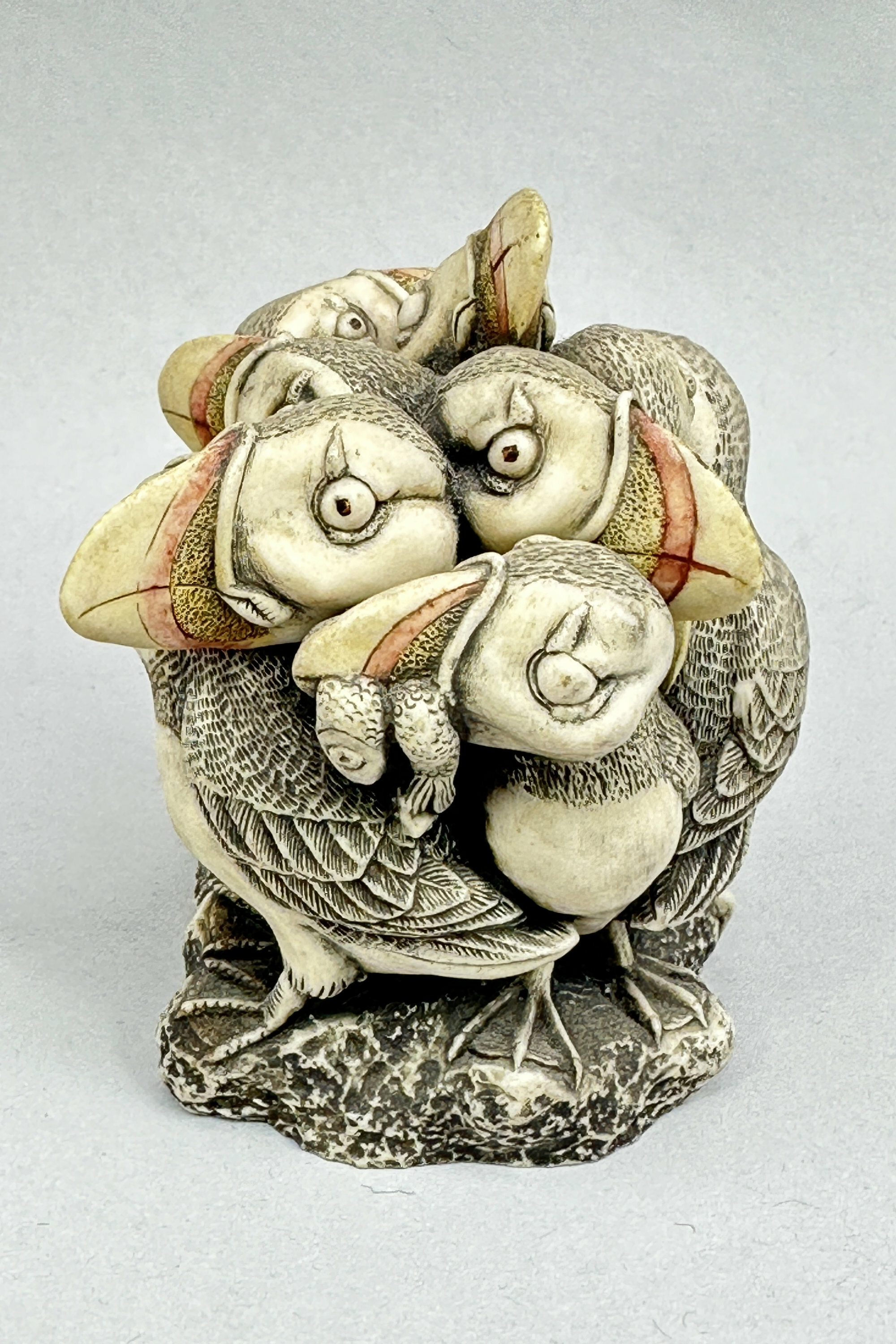
Harmony Kingdom Trinket Box with Puffins, dated 2001
Price: £20Harmony Kingdom is a business set up by Peter Calvesbert in 1992. Their studio is situated in the Malvern Hills and they have been producing whimsical figurine sculptures for over 25 years which have an enthusiastic following, particularly in the USA. ‘In Fine Feather’ is a discontinued item so now has a very modest rarity value in addition to its intrinsic charm.

Two Scottish Tartan Plaques, C20th
Price: £35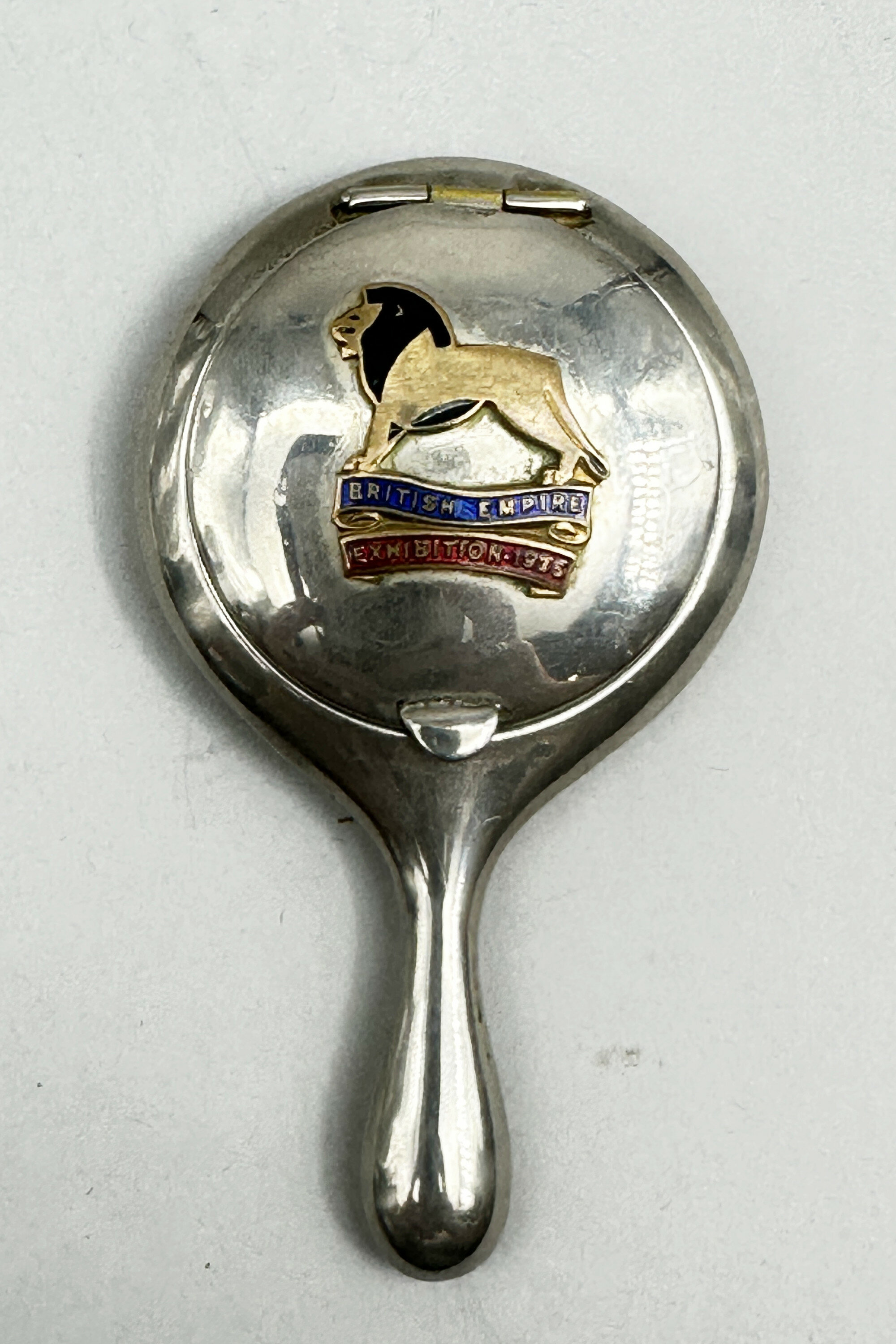
Powder Compact, British Empire Exhibition (1924-1925), dated 1925
Price: £45Souvenirs and medals were produced, amongst which were silver plated powder compacts as here. The round container for the powder has a hinged lid revealing the powder well below, originally fitted with a mauve ribbon tasseled powder puff, and a mirror above. On the surface of the lid, which has a tab for lifting, is a stylised brass lion, a symbol of the British Empire, vitreous enameled in black, red and blue with the wording ‘British Empire Exhibition 1925 ’ There is a short rounded handle and the back has an engraved mark ‘Rd [registered] 689177’ for the patent number. While many were doubtless made (and there is another version with a more slender handle, with a ring at the end, and the background colourings of the lettering reversed) few of these compacts seem to have survived making this a desirable addition to a collection of British memorabilia.

Mods at Clacton 1964, Photograph by Terry Disney for the Daily Express
Price: £45It was, though, a newsworthy confrontation and press photographers were sent in to record events. The most notable of these was Terry Disney who worked for the Daily Express newspaper. Disney was a distinguished and prolific photographer from the 1960s onwards and many of his striking images survive, not least those capturing the major personalities of the entertainment world at the time, including the Beatles themselves. His images of the ‘mods’ (he seemed less interested in the ‘rockers’) capture the atmosphere of the scenes vividly and this photograph is an excellent example of his work on that Easter weekend (for another see image 5). Often only obtainable under licence, this print is an ideal opportunity for a collector to acquire a near iconic image. It is offered with a very basic frame which might well be replaced with something which would enhance the photograph more sympathetically.
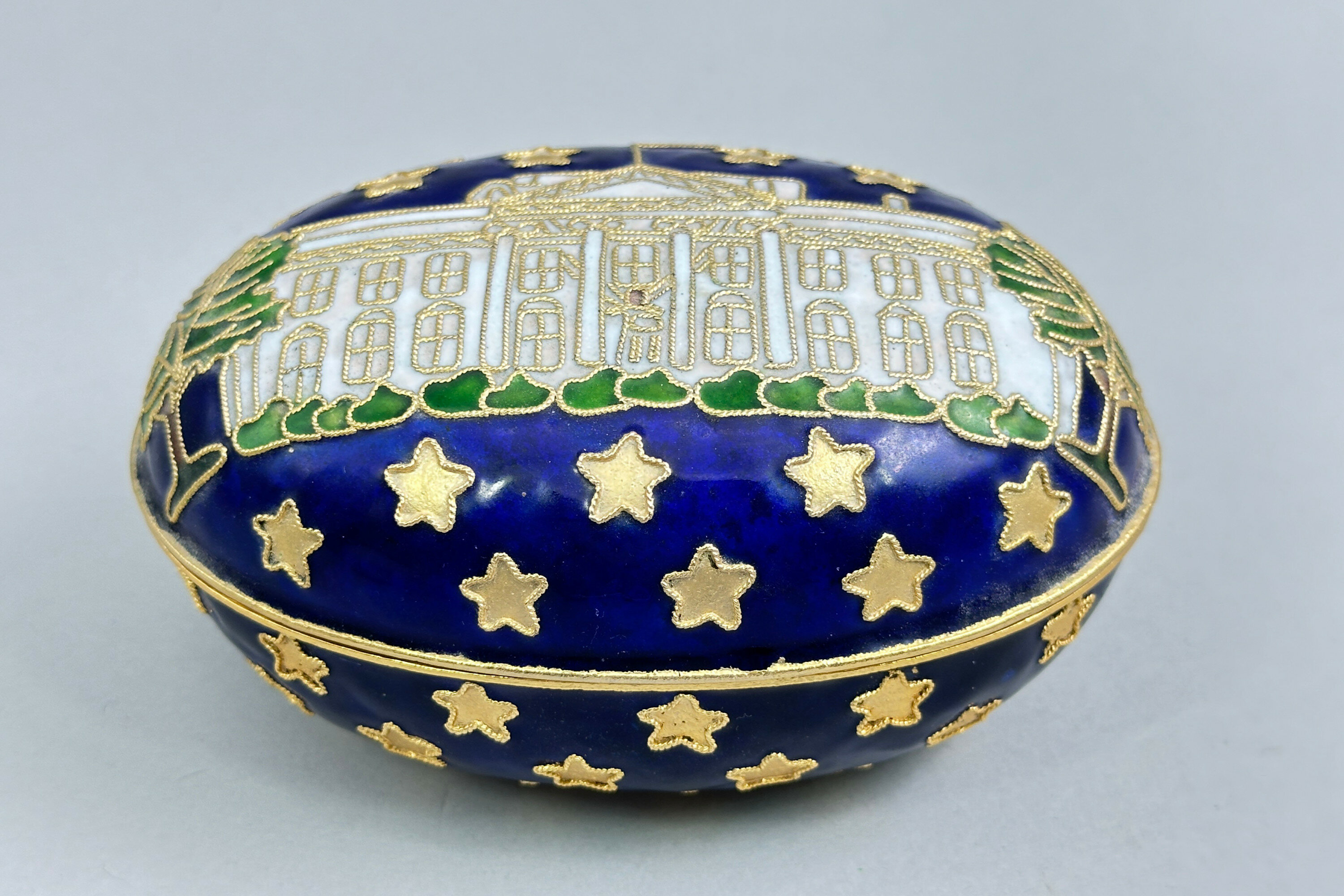
Souvenir White House Enamel Box and Cover
Price: £15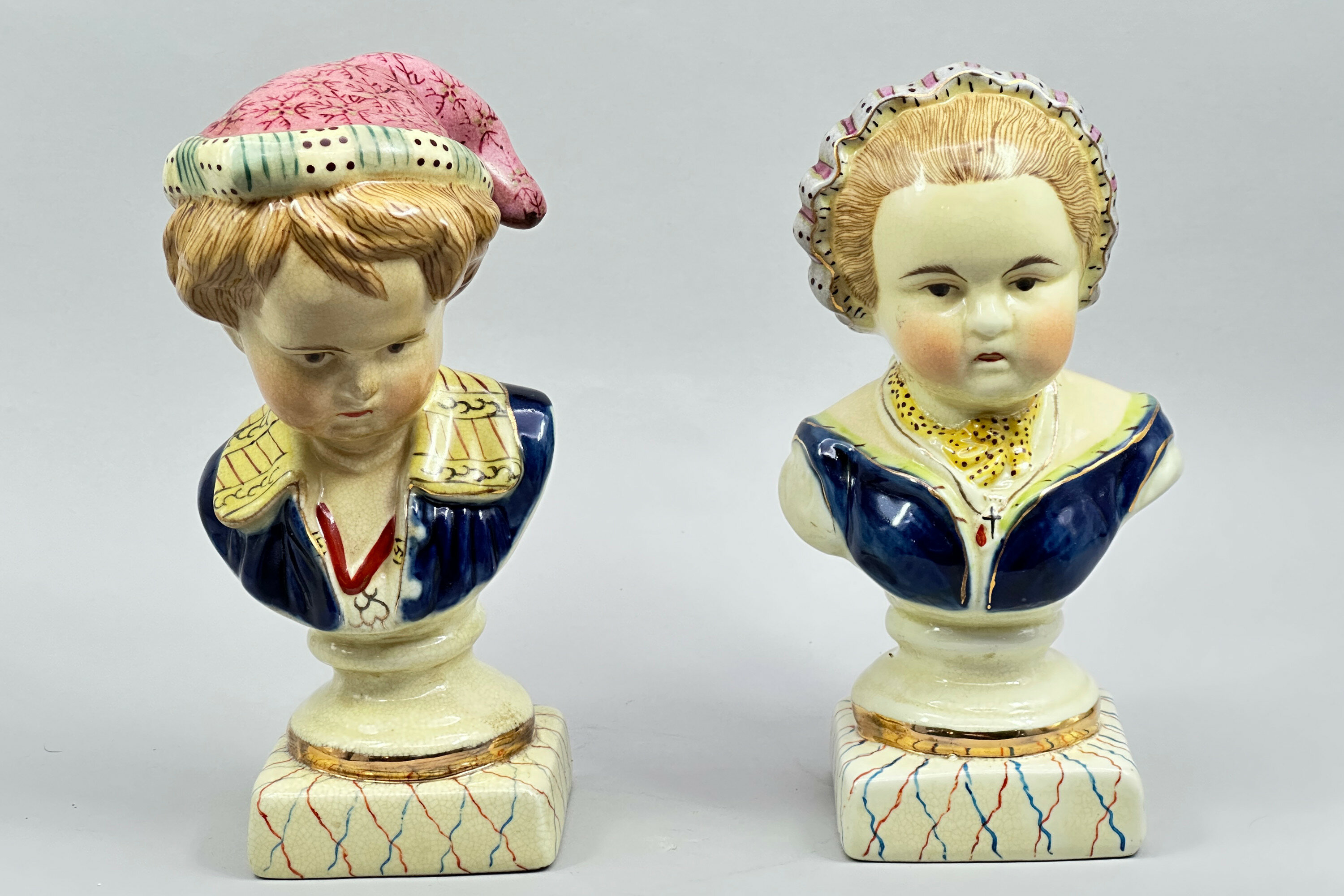
Pair of Staffordshire style Vintage Busts of Children, C20th
Price: £75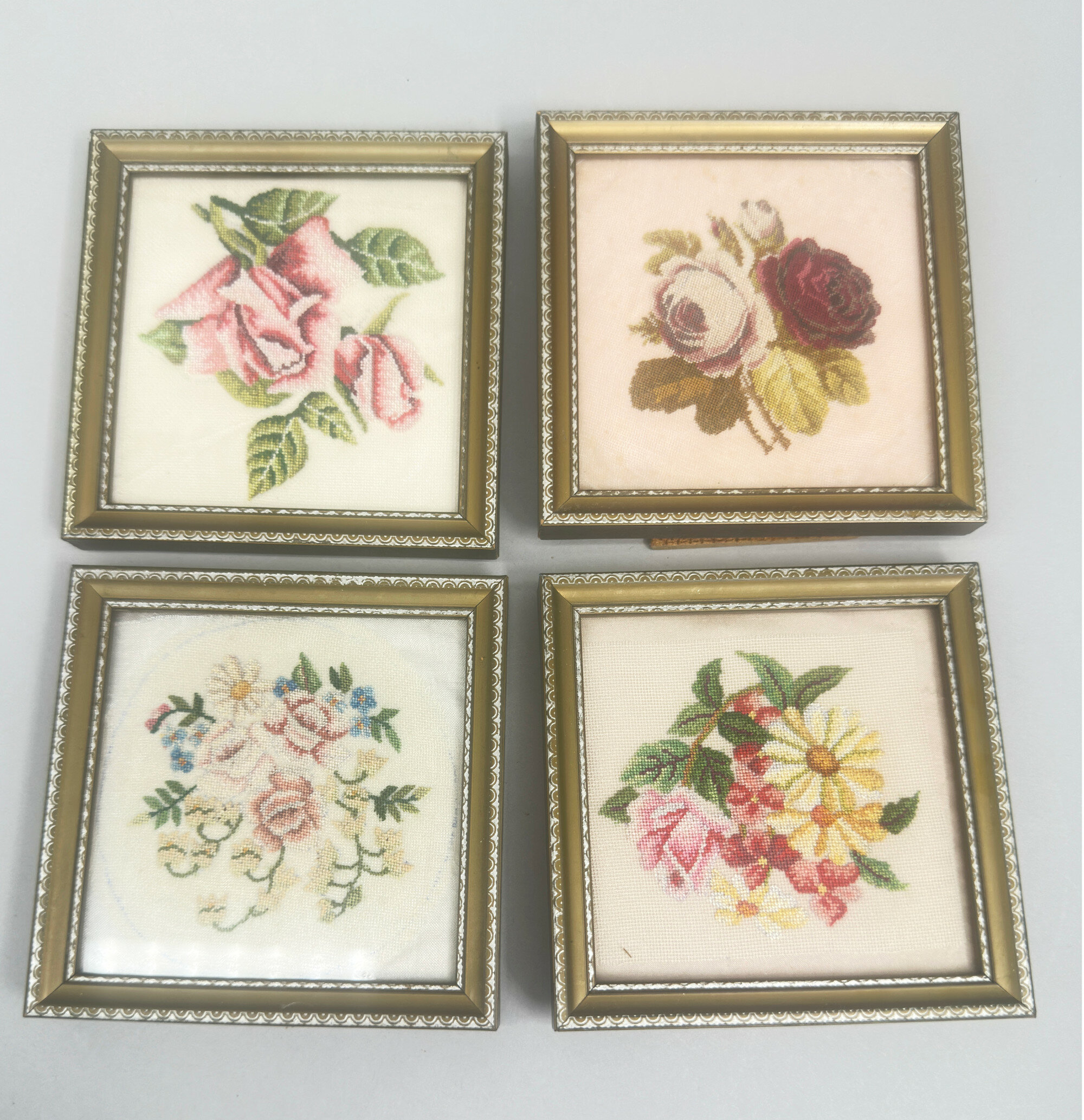
Set of four Petit Point needlepoint stitch framed floral Wall Hangings, mid C20th
Price: £45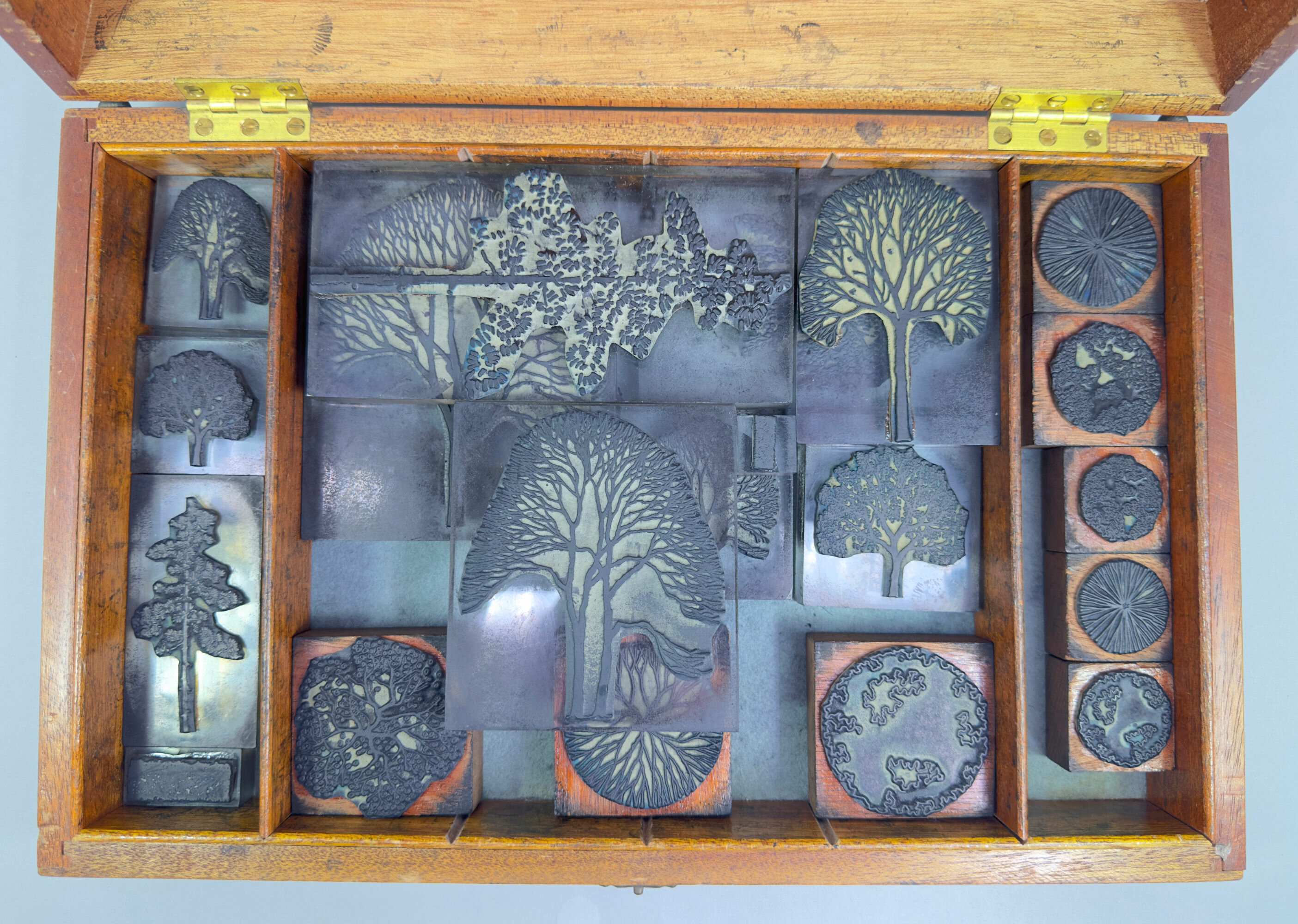
A group of twenty assorted artists Stamps in H&R Johnson sample Box, C20th
Price: £75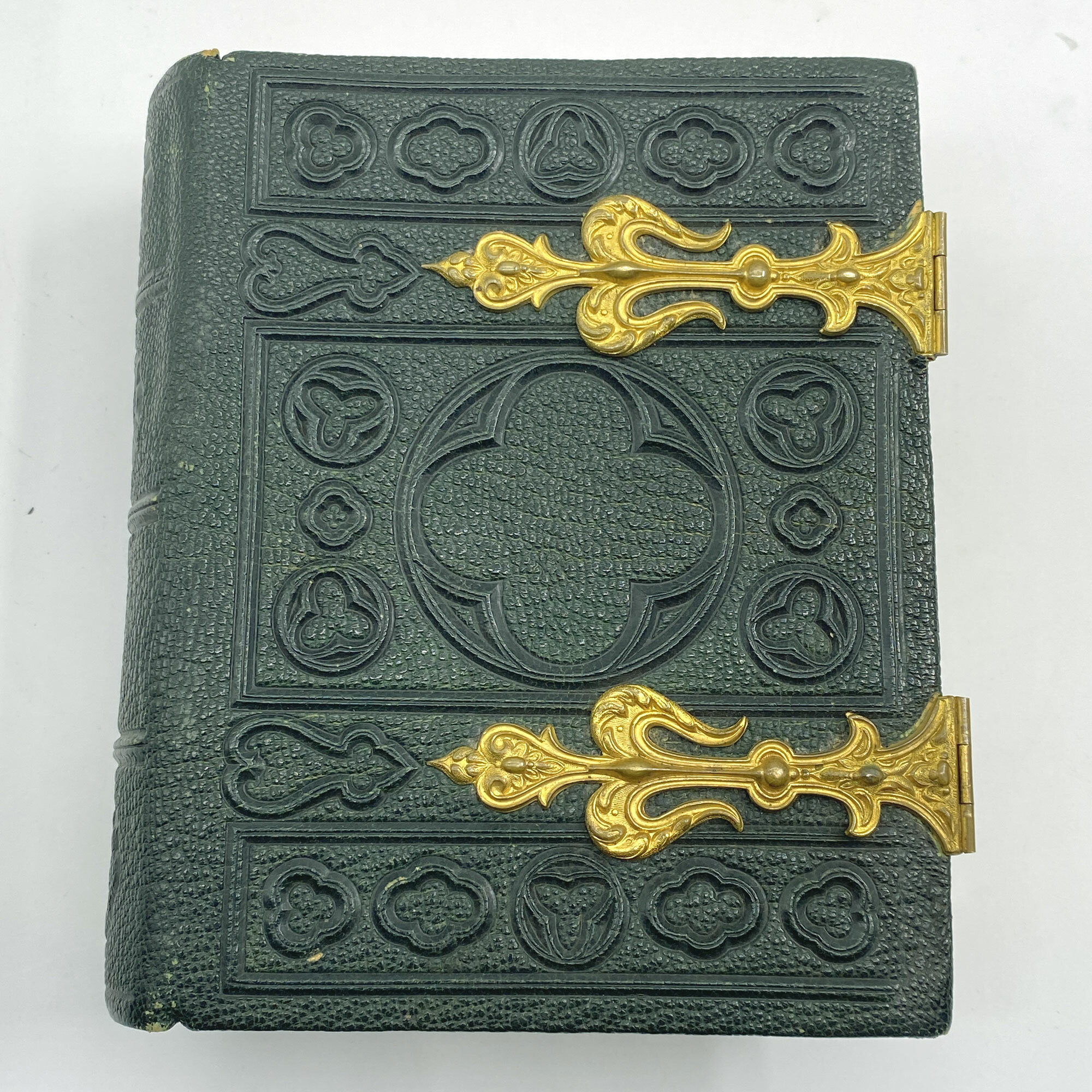
Victorian leather bound photo album made by Mechi and Bazin c.1870
Price: £110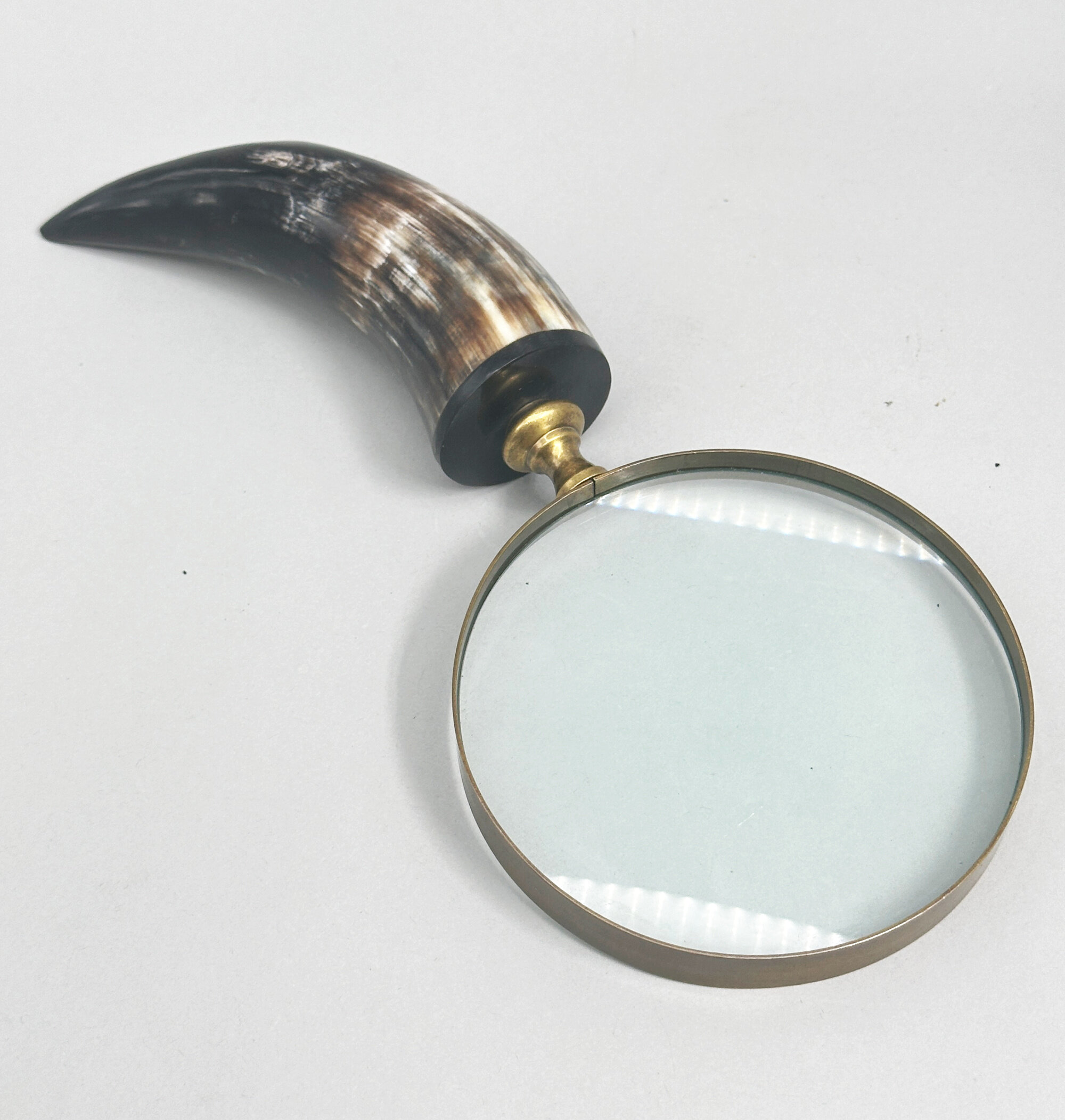
Edwardian large text magnifying glass with horn handle, early C20th
Price: £25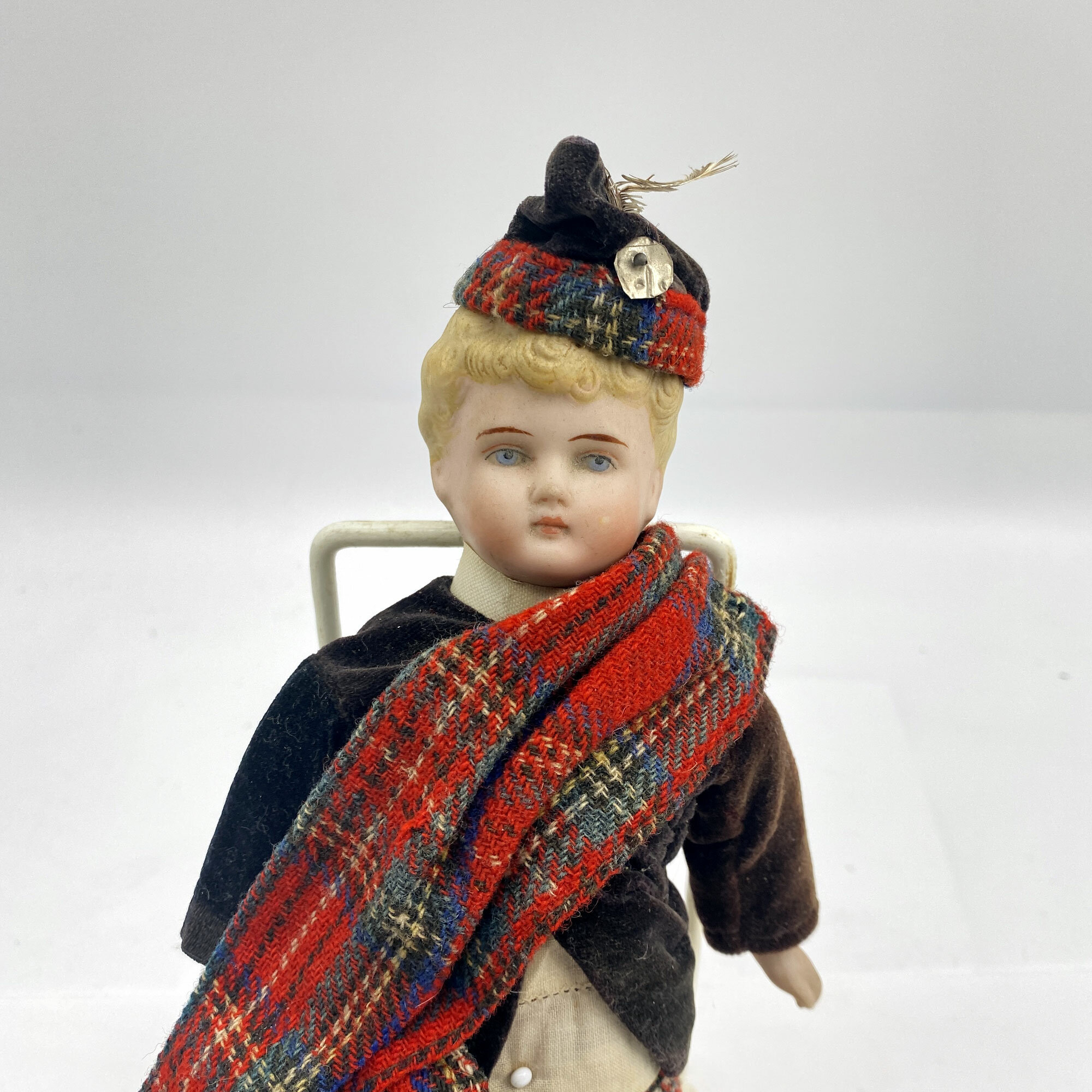
Bisque Scottish boy character doll c. 1900
Price: £60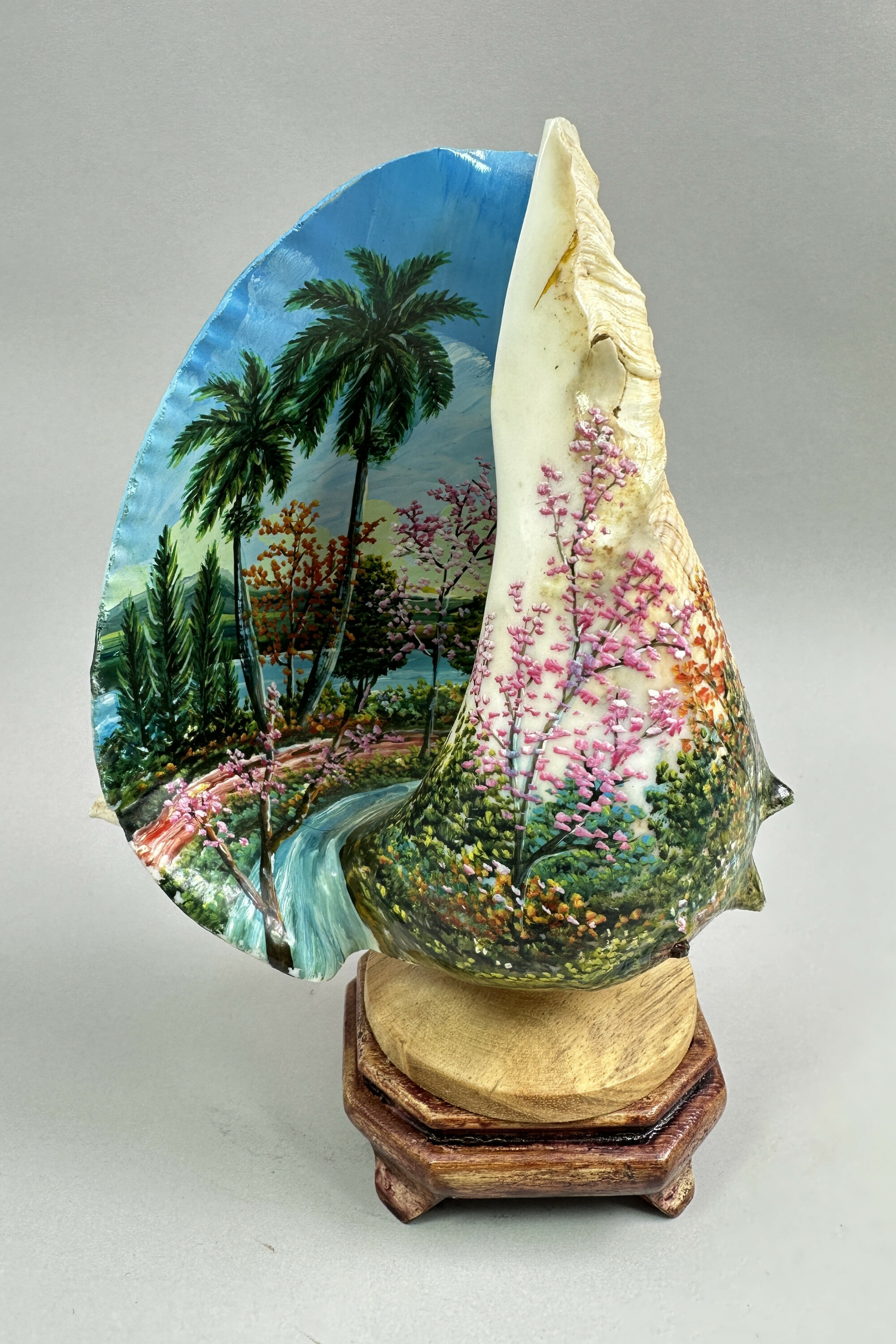
Kitsch Style Conch Shell with painted landscape decoration, C20th
Price: £45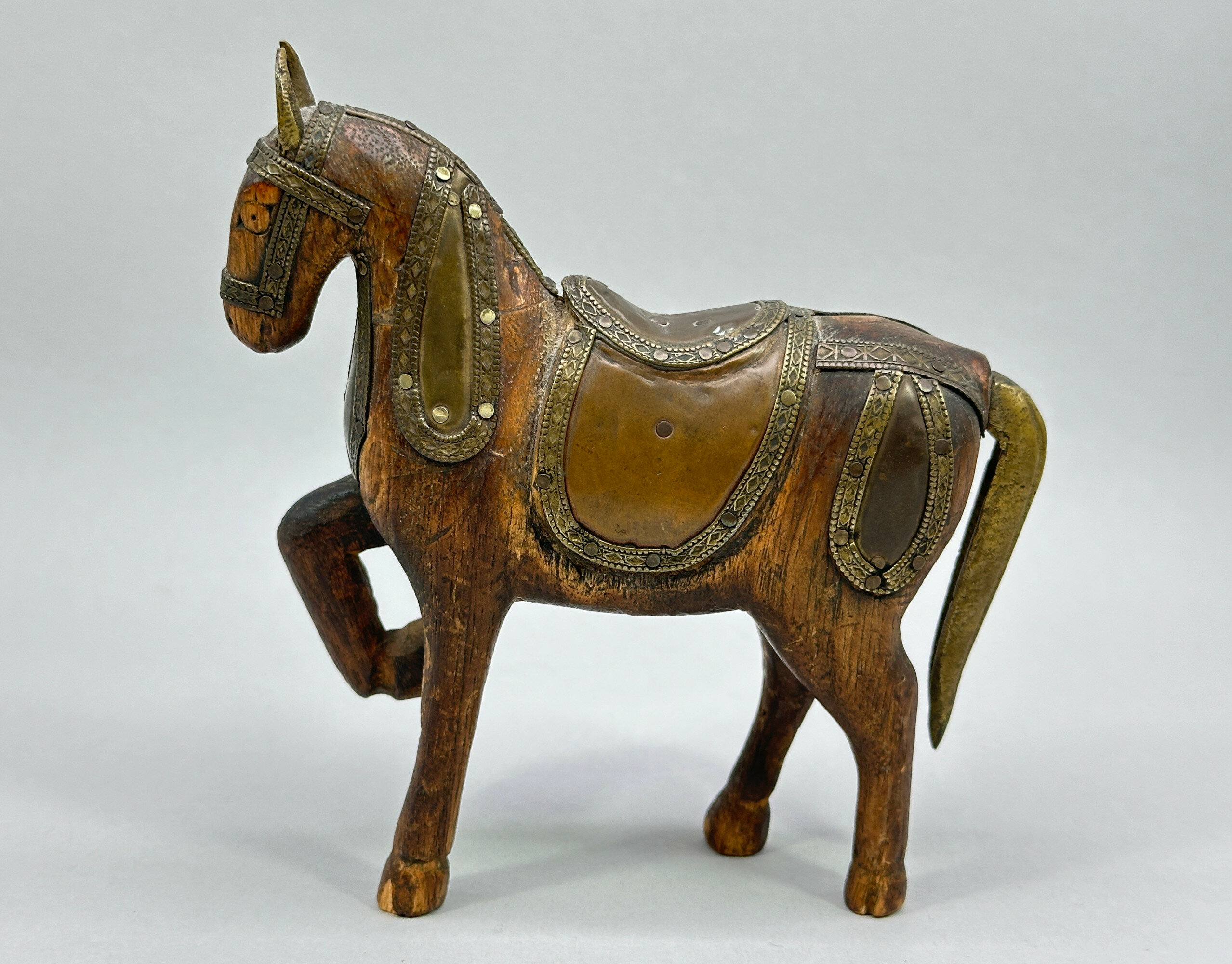
Indian wooden toy model of a Horse with metal fitments, early C20th
Price: £25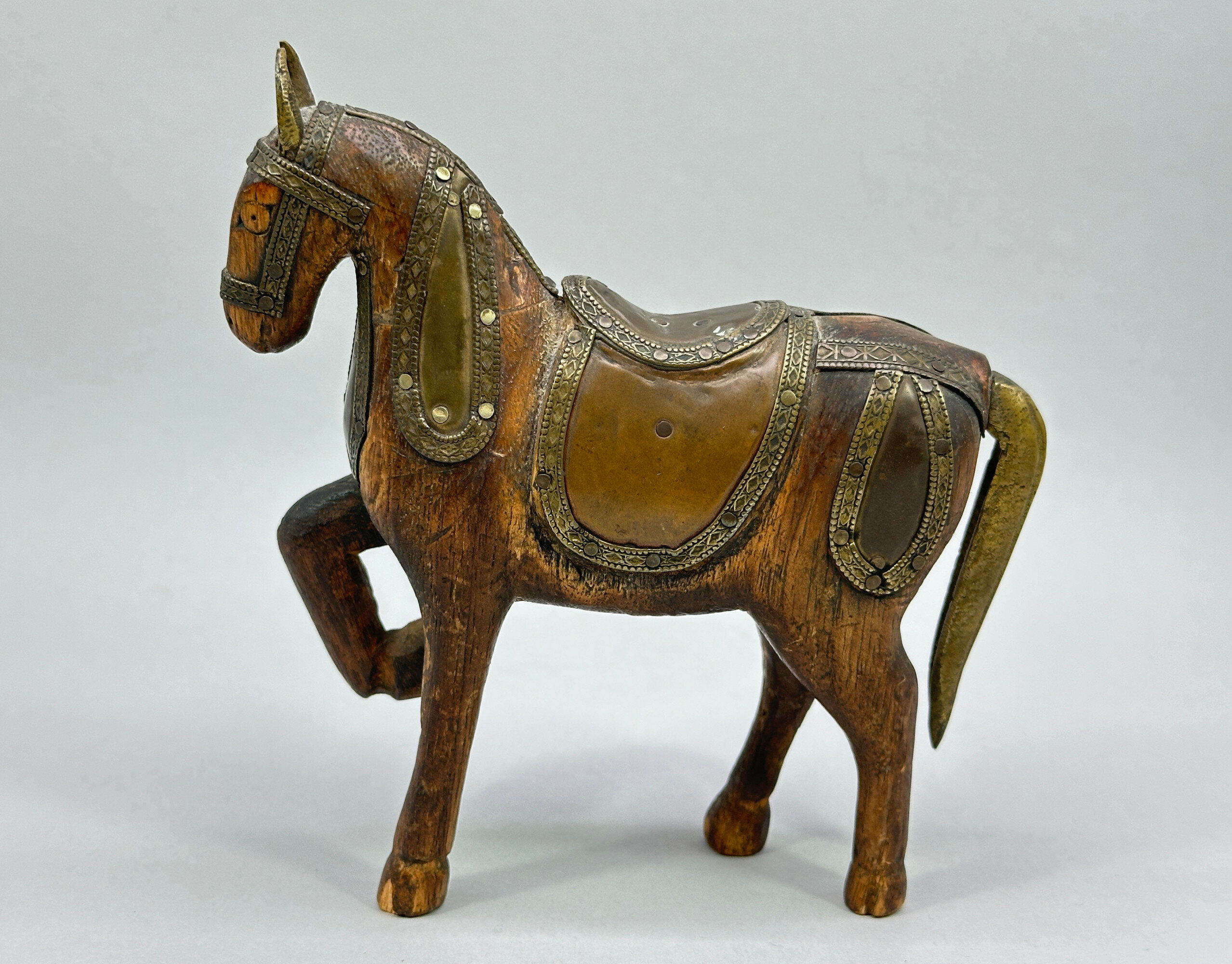
Indian wooden toy model of a Horse with metal fitments, early C20th
Price: £25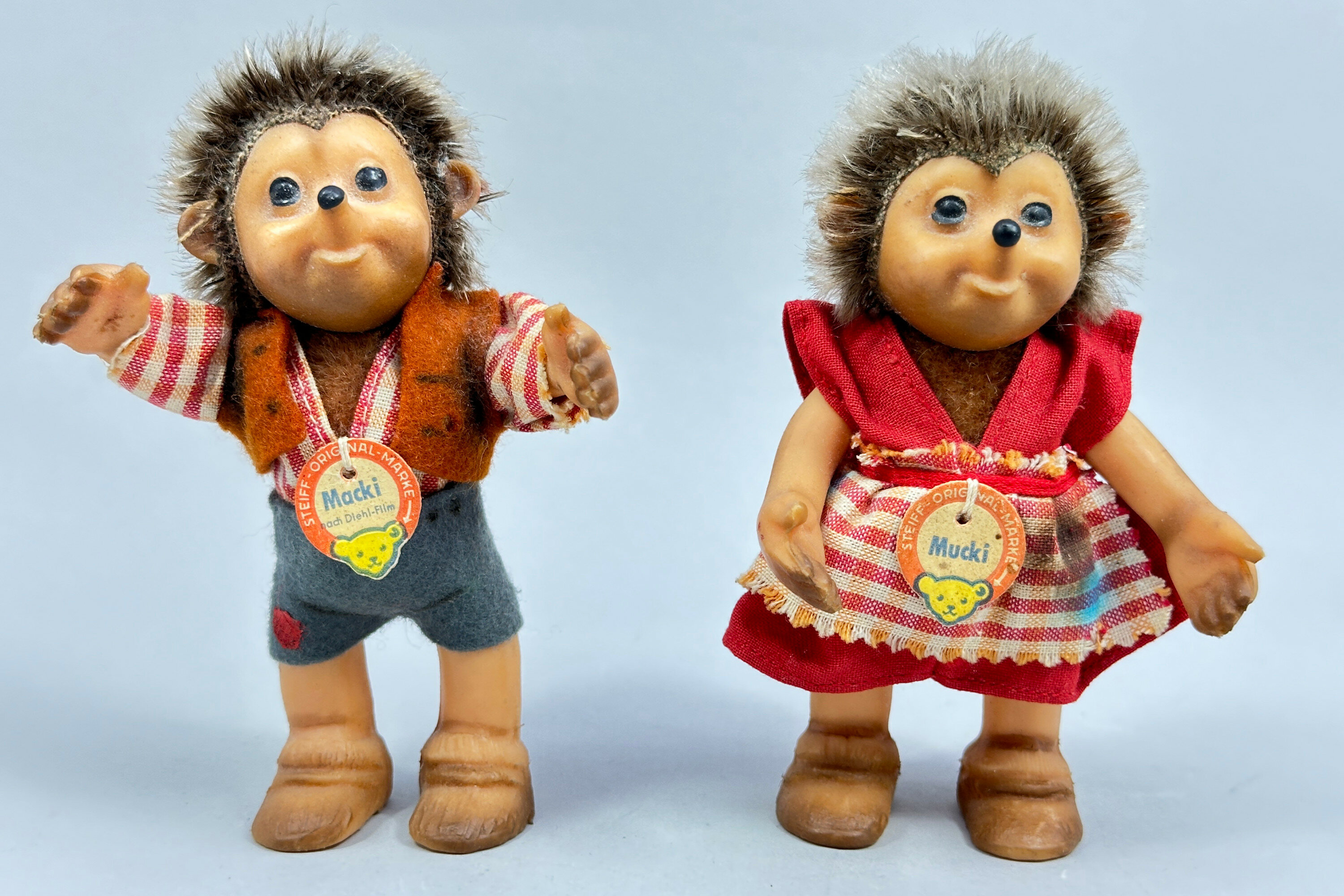
Steiff Hedgehogs : Macki and Mucki, 1950s/1960s
Price: £120…………………………………………………………………………………………........................................................................................…
The firm Steiff was begun by Margarete Steiff in 1880. A seamstress by training Margarete recognised a strong demand for some fabric elephants which she had made and intended for use as pincushions but soon became adopted as toys. Many other animals followed and a felt factory was founded in Giengen, Germany, in 1893 soon to be followed two years later by the first consignment of her wares to Harrods, London. In 1897, Margarete’s nephew Richard joined the firm and went on to design the first plush bear with movable arms and legs for which a substantial order was received of 3000 examples in 1903 from an American buyer who sensed a growing demand for these animals as a result of the US President Theodore ‘Teddy’ Roosevelt being shown in a photograph with a young cub in The Washington Post of the previous year. By 1907 a little under one million of these bears were being produced and turnover went on to increase substantially. Steiff bears can be purchased today and the earlier examples are actively sought after by collectors.
In the 1930s, Steiff began to collaborate with the Walt Disney company and characters from their films were reproduced starting, unsurprisingly, with Mickey Mouse and going on to include some of the most famous creations even up to the present day with ‘Nemo’ and ‘Woody’ from Toy Story being recent and popular additions.
The Hedgehog family, comprising Mecki and Micki with their children Macki and Mucki first appeared in 1951 and continued in production until the 1990s. These four characters are often found, sometimes with the characteristic round Steiff tag bearing their name and with the wording ‘Steiff–Original–Marke’ with an arrow pointing to a teddy bear’s head, but other hedgehog models which can be regarded as ‘cousins’ were made for a brief period in the 1960s. The nuclear family, though, comprised these four and they are sometimes illustrated together on postcards. Some of the round tags have additional wording ‘nach Diehl Film’ (‘from/after the film [maker] Diehl’) which refers to a German film company set up by three brothers Ferdinand, Hermann and Paul Diehl in 1937. They specialised in the ‘stop motion’ technique which involves the minute movement of model figures which, when photographed and with the images displayed in quick succession, allows the illusion of movement, now familiar today in the films featuring Wallace and Gromit.
Mecki and his family were popular characters in some of the films the Diehl brothers made and first made their appearance in 1949 designed as mascots for a German periodical called ‘Hor Zu’ which began publication in 1946 and covered radio and television news. Some of the tags attached to members of the family allude to this and Macki’s here reads at the back ‘Redaktionsigel von Hor Zu’ (‘the hedgehog editor of Hor Zu’). This explains the blue stain on Mucki’s skirt which is clearly meant to represent ink. Other members of the family also display marks on their clothes as a sign of being hard at work. Sensing the popularity of these characters, Stieff negotiated an exclusive right to produce dolls of them in 1951 and the hedgehogs became a staple of their output. The Diehls’ last film was made in 1970 and the hedgehogs featured in more than one over the years, becoming much loved characters in Germany during the 1950s and 1960s.
The techniques of production of the figures varied over time as did the attached labels. The earliest were made from 60% wool and 40% cotton with the faces formed from rubber like latex over a straw filling. Such example of these as survive are in rather poor condition. The very latest versions, made from 1968 to 1990 have a different form of chest name tag and a different ‘button’ label. (From the earliest times, Steiff toys had a yellow rectangular label listing the materials used and the country of origin and sometimes the price, attached by a small button marked ‘Steiff’. Unfortunately, these are missing here but the chest tags are intact and in good condition which does not always occur.) Dating of these two examples is therefore midway and probably to the late 1950s or early 1960s and they survive in near pristine condition making them an excellent addition to a collection of Steiff soft toys and a fine memento of almost iconic companions to so many children in post war Germany.
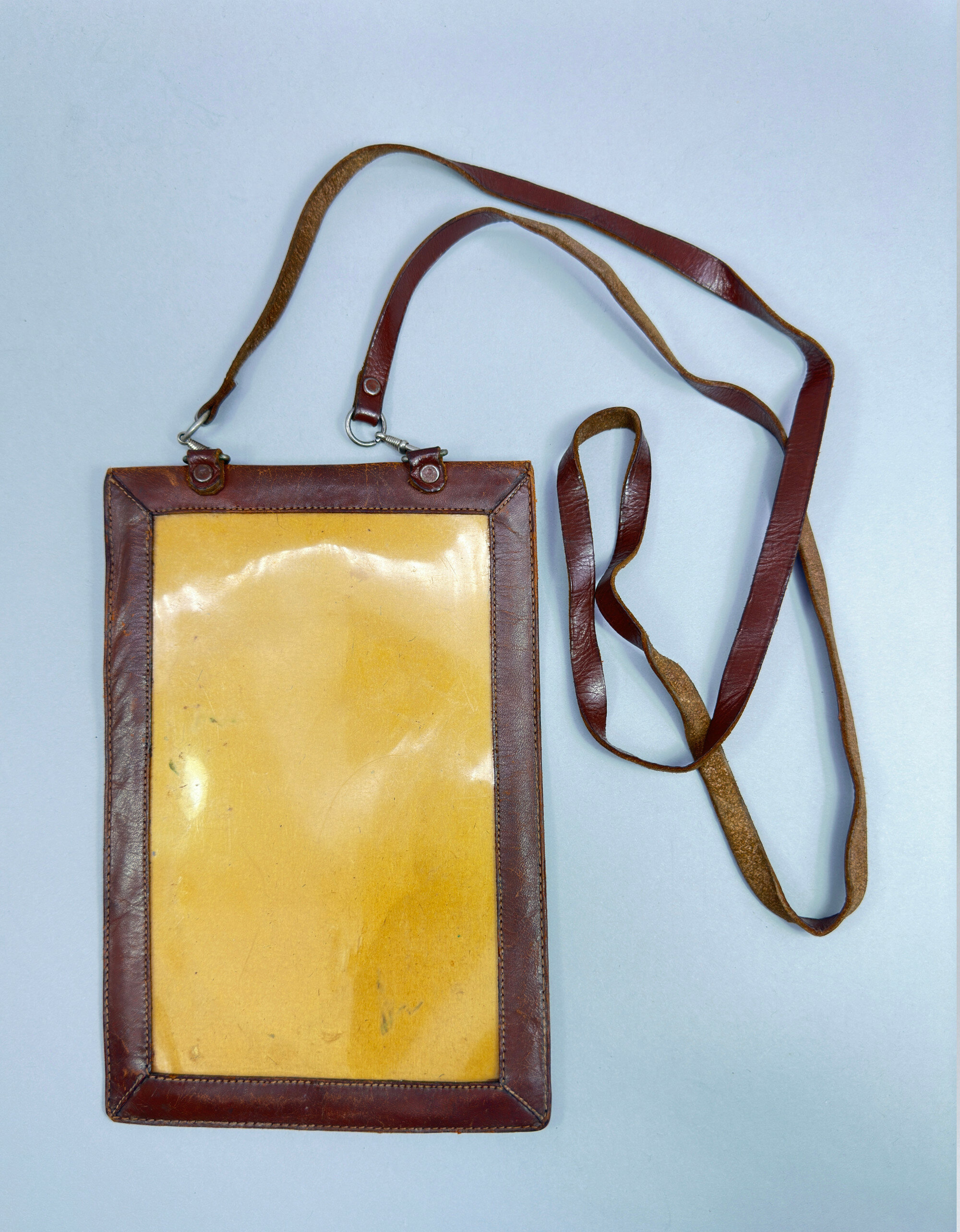
Vintage Leather Map Case, probably 1940s
Price: £45
Desktop Model of a Typhoon Bomber Plane, Modern
Price: £45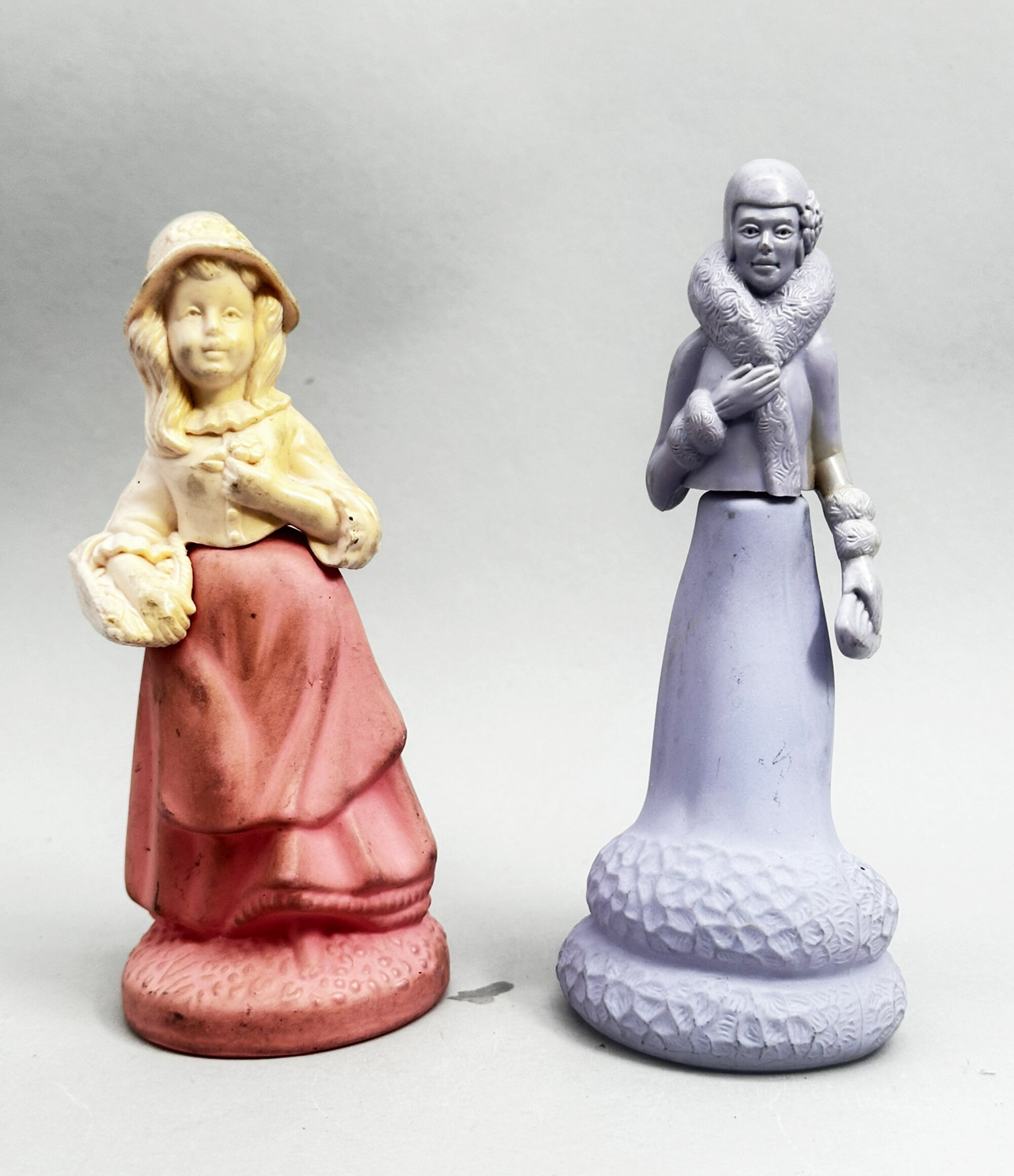
Two Avon Perfume Bottles, Lady and a Girl, 1970s
Price: £20